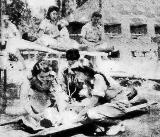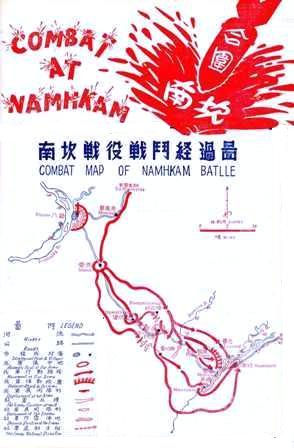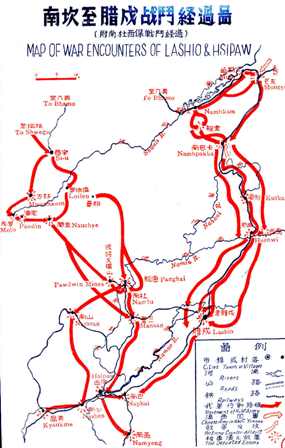CHINESE ARMY
INDIA-BURMA
CAMPAIGN
A unique pictorial history from a Chinese perspective
China's Expeditionary Forces and C.A.I.
In the history of China's participation of war overseas, there were two Chinese Expeditionary Forces and
one Chinese Army in India.
The first Chinese Expeditionary Force was sent from Yunnan in the spring of 1942 into Burma to
participate in the defense of that country. The words "1st Route" were attached to this Expeditionary Force, as the
Japanese aggressive campaign was then at the height of its fury, and it was planned that additional expeditionary
forces, to be designated 2nd and 3rd Routes, would be dispatched by China to the aid of her Allies in Siam and even
the South Pacific. The first force was, however, generally known to the world merely as the Chinese Expeditionary Force,
the words "into Burma" being sometimes designated together. It was commanded by General Lo Cho-ying.
With the conclusion of the first Burma Expedition and the end of this mission of the first Chinese
Expeditionary Force, the Chinese Army in India (C.A.I.) was created. This designation was adopted because there was
no fighting in Indian territory, and an expeditionary force could not be stationed in an Allied country.
The C.A.I. was to become an important actor in the later Burma campaign which reopened the route
between India and China. The New First Army, the achievements of which are recorded in this publication, constituted
the major part of the C. A. I. Throughout its later activities in the successful counter-attack in Burma and until
its return to China after the completion of its mission, the C.A.I. maintained its original designation.
The second Expeditionary Force sent by China into Burma was organized in 1944. This force entered
Burma from western Yunnan, under the command of General Chen Cheng, and later of General Wei Lin-huang, to co-ordinate
with the efforts of the C.A.I. attacking from India. The two Chinese forces eventually effected a junction at Mongyu
after a brilliant campaign.
The First Force into Burma
The Pearl Harbor treachery in December, 1941, presaged a wild attempt by Japan to penetrate southwards
into the Pacific. Following their capture of Singapore, the Japanese launched and intensified drive into Burma to deal
a blow on our British ally and to cut off the sole surviving international route to China - the Burma Road. The
combined forces of the Japanese 33rd, 55th and 18th Divisions took part in this offensive.
When Rangoon, capital of Burma, fell into Japanese hands on March 7, 1942, the Chinese Government at
Britain's request dispatched the 5th, 6th and 65th Armies, then stationed at Yunnan, into Burma - the first Chinese
Expeditionary Force.
Out of this Expeditionary Force, the men of the New 38th Division and the New 22nd Division were later
transferred to India to form the nucleus of the C.A.I.
The Birth of the C.A.I.
The first Burma campaign failed because of inadequacy of Allied preparedness and the lateness in the
arrival of the Chinese forces. Nevertheless, during the campaign, the 5th Army inflicted a severe toll on the enemy,
while the New 38th Division achieved the great feat of rescuing more than 7,000 British troops from a Japanese trap
at Yenangyaung.
The withdrawal from Burma, in the face of overwhelming odds, was finally effected under great
difficulties by June 8, 1942.
On June 14, 1942, a military review took place at New Delhi on the occasion of United Nations' Day.
A squad from the New 38th Division represented China on the occasion, and made a plausible impression to the Allied
leaders. Both British and Indian circles expressed open admiration for the Chinese achievements at the Burma expedition
just concluded, and the foundations were laid for the stationing of a Chinese Army in India.
The 38th Division, which had withdrawn into Indian territory, was a month later transferred to Ramgarh
for training. The division was soon joined by the New 22nd Division, originally intended to be withdrawn into Yunnan,
but re-directed to India.
In August, 1942, the Chinese Army in India was officially formed. General Stilwell, Chief of staff in
the China Theatre, was appointed Commander-in-Chief, with General Lo Cho-ying as his deputy.
In the spring of 1943, General Lo was transferred to a post at home. The High Command organized the New
38th Division, the New 22nd Division, and the newly created 30th Division (formed in India) into a new army - the New
First Army. Lt. Gen. Cheng Tung-kuo was placed in command of the Army with Lt. Gen. Sun Li-jen as the Deputy Commander,
who commanded the New 38th Division concurrently. The New 30th Division was commanded by Maj. Gen. Hu Shu, while Maj.
Gen. Liao Yao-hsiang retained the command of the New 22nd Division. Artillery regiments, Engineering regiments, motor
transport regiments, armored car units, anti-aircraft units, signal corps, special service units, military police units, and
men and animal transportation units, either sent from home or newly organized in India, increased the strength of the
Army which was subsequently further augmented by the 14th and 50 Divisions after its march into the Hukawng Valley.
The War Record in Burma
The counter-offensive in Burma really began in March 1943, when the vanguards of the New 38th Division
undertook the duty of annihilating or expelling the enemy on the Indian border so that the initial engineering work
on the India-Burma Road could be protected. This prelude to the actual campaign was successfully completed ny the end
of October, 1943, when the enemy's 18th Division, reputed a strong force, was driven away from its stronghold. The
operations at this juncture were carried out under greatest difficulties, for in addition to the obstinate enemy,
our forces had to combat the reptile infested jungle, where communications were entirely underdeveloped.
On the eve of New Year's Day of 1944, the New 38th Division successfully took Yupong Ga, and
reinforcements arrived later.
By February, 1944, the New 38th Division, continuing its success, occupied Taipha Ga, while the New 22nd
Division also captured Taro, and the two forces launched a combined attack against Maingkwan. The victory at Walawbum
on March 9 concluded the Hukawng Valley campaign.
The enemy defense of the Mogaung Valley was aided by its geographical advantages and the Chinese progress
was considerably checked by the difficult terrain. By the latter part of May, 1944, however, when a new strategy was
employed we made our advance. In spite of the high water level on the river with the approach of the rainy season we
succeeded in crossing the Namkawng River. This act surprised the enemy and cut off his retreat, capturing at the same
time much of his supplies. The famous Battle of Seton ensued with disastrous results to the enemy. On June 16, we
captured Kamaing, and on the 25th of the same month Mogaung also fell.
Simultaneous with this fighting in the Mogaung Valley, the fight for Myitkyina also raged high. A
combined Chinese-American detachment, consisting of the New 38th Division, the 50th Division, and a portion of the
14th Division, with one regiment of American troops, attacked that important city. The Japanese staged a desperate
defense and street fighting raged for 80 days. The city finally fell on August 4, and the first stage of the Burma
counter-offensive was concluded.
During the temporary respite that followed this important victory, there were some changes in the
organization and command of the Chinese Army in India. General Stilwell had been recalled to the United States and
he was succeeded by Lt. Gen. Sultan, with Lt. Gen. Cheng Tung-kuo second-in-command. The Chinese Army in India was
now composed of two armies - the New First and the New Sixth. The New First Army consisted of the New 30th Division
and the New 38th Division. The New Sixth Army had under its command the 14th Division, the 50th Division, and the
New 38th Division. General Sun Li-jen commanded the New 1st Army while General Liao Yao-hsiang commanded the New 6th.
The rainy season of Burma ended by October when C.A.I. commenced its second phase of offensive. The
New 6th Army except the 50th Division which became part of the New First, had in the meantime been transferred to the
home front and the New 1st Army continued its march towards Bhamo to complete the task of opening the overland road
from India to China.
The siege of Bhamo reached its fiercest stage on November 17, 1944, when the Japanese resorted again to
a desperate defense strategy. By December 15, enemy lines were fully penetrated, and the Chinese force pushing ahead
passed Bhamo towards Namhkam. The Army was now met by the Japanese 49th Division, which had been specially transferred
to Burma from Korea, only to be routed after five days of intensified combat.
Namhkam was entered by the New 30th Division on January 15, 1945. On January 27, the New 38th Division
captured Mongyu, the junction between the new India Road and the former Burma Road. The following day, a ceremony was
held to celebrate the junction of C.A.I. and Expeditionary Force from Yunnan, and Stilwell Road was fully opened.
To render effective assistance to our British allies fighting in lower Burma and to protect the newly
opened Stilwell Road, the New First Army continued toi push southward towards central Burma. On February 20, the New
30th Division captured Hsenwi, while on March 8, the New 38th Division captured Lashio. At the same time, the 50th
Division, sweeping down from Katha, also captured in succession Mwanhawn, Namtu, and Hsipaw. On March 20, Kyankme was
captured, completing the chain of victories of the Chinese Army in the Burma campaign.
The campaign in Burma occupied two full years, practically all of which were fully taken up in fighting
against all odds. The difficult terrain and jungle fighting will all its horrors were strenuously overcome. All these
factors made up an epic episode of achievement in our military annal.
During the campaign, Chinese Army encountered the Japanese 2nd, 18th, 49th, 53rd, and 56th Divisions
and the 34th Independent Brigade, as well as other special units. The enemy suffered 33,082 dead, including many
ranking officers, while another 75,000 casualties were counted as wounded, and more than 300 prisoners taken. The
enemy practically suffered total annihilation. Our casualties were about one-sixth of that of the enemy. Trophies
which were taken included 7,938 rifles, 643 machine guns, 185 cannons, 553 motor vehicles, 453 locomotives and wagons,
67 tanks, 5 airplanes, 108 godowns, and more than 20,000 tons of metals. The area liberated cy C.A.I. was more than
50,000 square miles, in which were 646 miles of highways and 161 miles of railroads.
Chosen as the training center for Chinese Army in India, the small town of Ramgarh in the Province of
Bihar soon bustled with life. The Chinese flag fluttered gaily over this part of land where Buddha was born.
Though in the winter nights the air is a bit cold, the sun remains hot all the year around. Training
was usually undertaken in intense heat. Besides the daily drill by units themselves, the Army was given sunstantial
training in motor driving, tank operation, artillery, anti-gas practices, signal communications, engineering, ordnance
and veterinary courses.
As the ultimate mission of the Army was to recapture Burma, emphasis was placed on jungle fighting,
hill and tree climbing, bridge building and similar exertions were being conscientiously gone through by both officers
and men. The building up of a strong body was, of course, a primary prerequisite for all men. No time was spared in
conducting a vigorous exercise as an all round activity.
Political training, morale up-lifting and general improvement on the Knowledge of the soldiers also
occupied an important place in the schedule. English, Hindustani and Burmese were avidly studied in order to enable
the men to cultivate a better understanding with the local people with whom they had to come in contact.
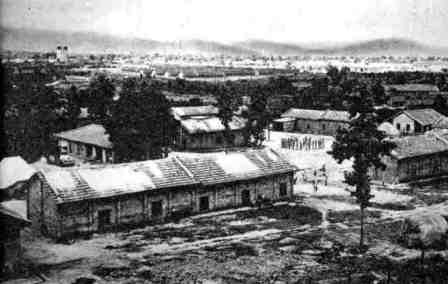 RAMGARH TRAINING CENTER
RAMGARH TRAINING CENTER
|
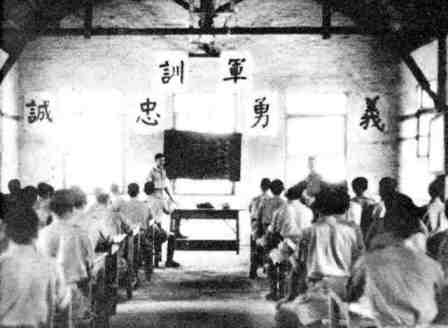 A CONSISTENT POLITICAL TRAINING ON SUPREME DUTY OF SACRIFICE
A CONSISTENT POLITICAL TRAINING ON SUPREME DUTY OF SACRIFICE
|
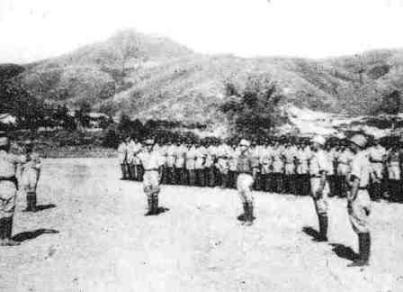 REPORT BY ADJUTANT TO OFFICER COMMANDING IN FIELD DRILL
REPORT BY ADJUTANT TO OFFICER COMMANDING IN FIELD DRILL
|
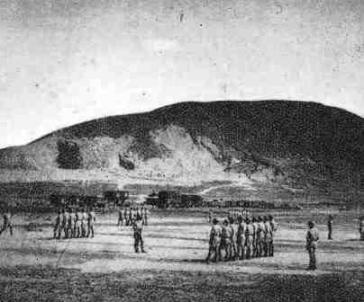 TRAINING BY GROUPS
TRAINING BY GROUPS
|
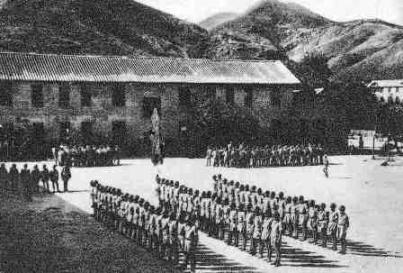 RIGID TRAINING UNDER TROPICAL SUN
RIGID TRAINING UNDER TROPICAL SUN
|
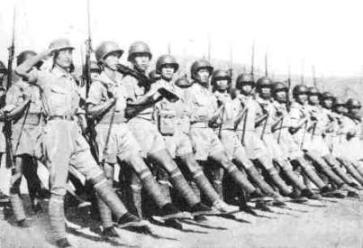 MARCH IN REVIEW
MARCH IN REVIEW
|
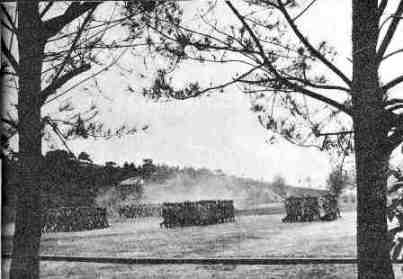 INTENSIVE DRILL
INTENSIVE DRILL
|
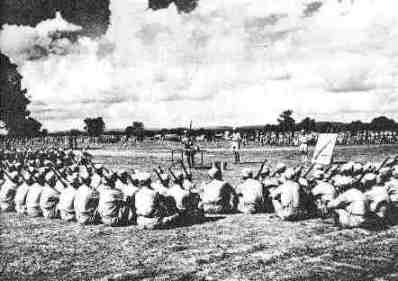 INSTRUCTION GIVEN BY COMPETENT PERSONNEL
INSTRUCTION GIVEN BY COMPETENT PERSONNEL
|
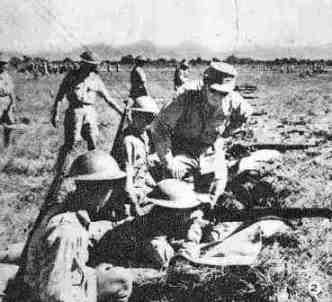 LT. GEN. SUN LI-JEN PERSONAL SUPERVISION
LT. GEN. SUN LI-JEN PERSONAL SUPERVISION
|
 BAYONETTING PRACTICE
BAYONETTING PRACTICE
|
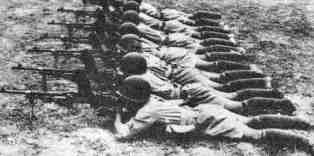 SHOOTING AT RANGE TARGETS
SHOOTING AT RANGE TARGETS
|
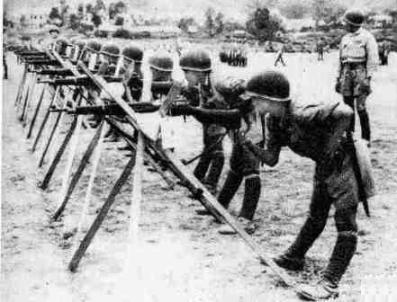 AIMING TRAINING
AIMING TRAINING
|
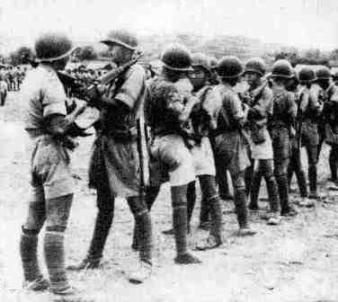 MUTUAL RECTIFICATION IN SHOOTING PRACTICE
MUTUAL RECTIFICATION IN SHOOTING PRACTICE
|
PHASES OF CAVALRY TRAINING
CHIEF OF STAFF GENERAL HO YING-CHING
ON INSPECTION OF THE TRAINING CENTER
|
Chief-of-Staff General Ho Ying-ching on his visit to India at invitation of Marshal Wavell, Viceroy of India,
February, 1943. General Ho made a special tour to Ramgarh Training Center where a maneuver was held for his review.
 GENERAL HO YING-CHING TESTING THE SUSPENSION BRIDGE CONSTRUCTED BY THE ENGINEER CORPS.
GENERAL HO YING-CHING TESTING THE SUSPENSION BRIDGE CONSTRUCTED BY THE ENGINEER CORPS.
|
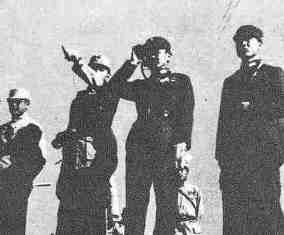 GENERAL HO ON INSPECTION OF MANEUVERS, ACCOMPANIED BY LT. GEN. SUN (LEFT), LT. GEN. LIAO YAO-HSIANG (SECOND TO LEFT)
AND MAJ. GEN. TANG SHOU-CHIH (EXTREME RIGHT).
GENERAL HO ON INSPECTION OF MANEUVERS, ACCOMPANIED BY LT. GEN. SUN (LEFT), LT. GEN. LIAO YAO-HSIANG (SECOND TO LEFT)
AND MAJ. GEN. TANG SHOU-CHIH (EXTREME RIGHT).
|
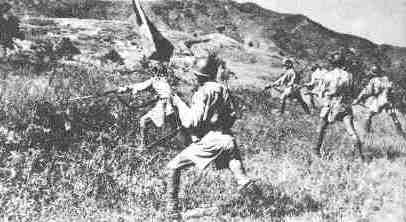 THRUSTING FORWARD WITH BAYONETS AND TOMMY GUNS APPROACHING AN OBJECT
THRUSTING FORWARD WITH BAYONETS AND TOMMY GUNS APPROACHING AN OBJECT
|
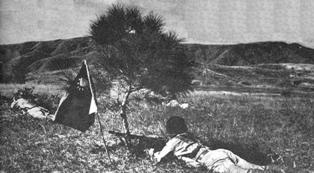 MOVING FORWARD ON THEIR FRONT
MOVING FORWARD ON THEIR FRONT
|
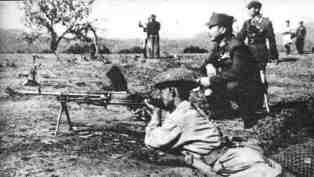 GENERAL HO CONFERRING A MEDAL OF AWARD TO MACHINE-GUNNER PVT. WANG CHING, WHO DID A BRILLIANT PART IN THE MANEUVER
BY HOLDING TO HIS POSITION FIRING.
GENERAL HO CONFERRING A MEDAL OF AWARD TO MACHINE-GUNNER PVT. WANG CHING, WHO DID A BRILLIANT PART IN THE MANEUVER
BY HOLDING TO HIS POSITION FIRING.
|
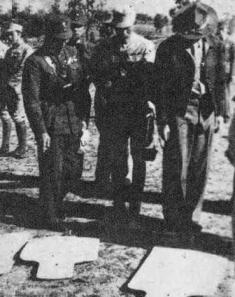 OVER ONE THOUSAND HOLES BORNE ON THE SCORES OF DUMMIES INDICATING THE EFFICIENCY OF FIRING
OVER ONE THOUSAND HOLES BORNE ON THE SCORES OF DUMMIES INDICATING THE EFFICIENCY OF FIRING
|
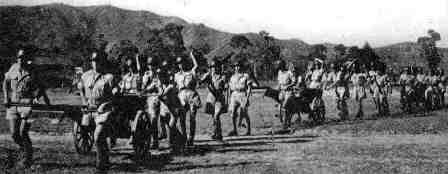 ARTILLERY MEN WITH THEIR WEAPONS
ARTILLERY MEN WITH THEIR WEAPONS
|
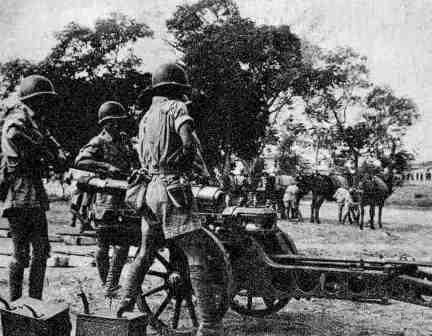 MOUNTING AND DISMANTLING OF MOUNTAIN GUNS
MOUNTING AND DISMANTLING OF MOUNTAIN GUNS
A DAILY ROUTINE OF THE ARTILLERY CORPS.
|
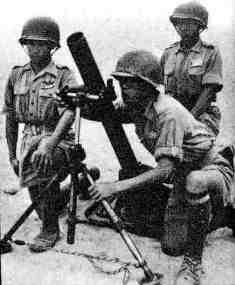 TRENCH MORATRS IN ACTION
TRENCH MORATRS IN ACTION
|
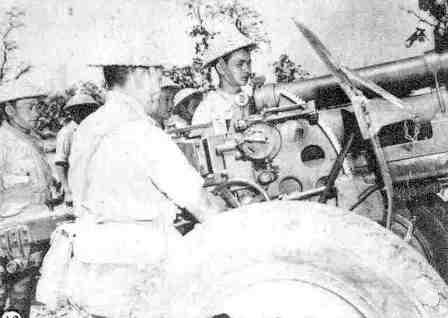 HEAVY GUN BATTERY UNDER TRAINING
HEAVY GUN BATTERY UNDER TRAINING
|
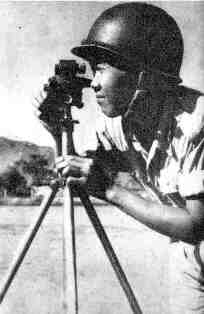 RANGE MAKING OF A TARGET
RANGE MAKING OF A TARGET
|
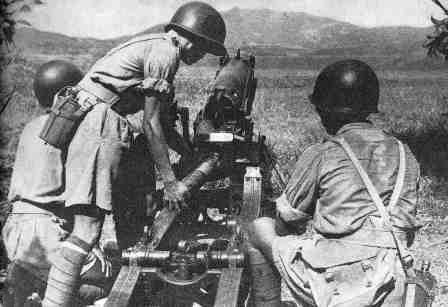 MOUNTAIN GUNS IN MOCK WAR
MOUNTAIN GUNS IN MOCK WAR
|
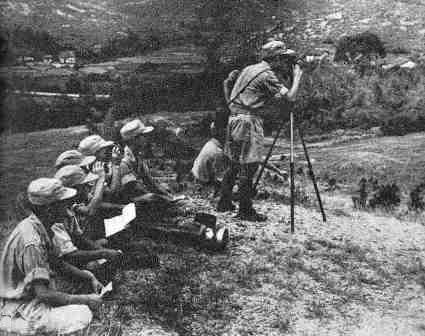 MEASUREMENT TAKING OF THE GUN FIRING EFFICIENCY
MEASUREMENT TAKING OF THE GUN FIRING EFFICIENCY
|
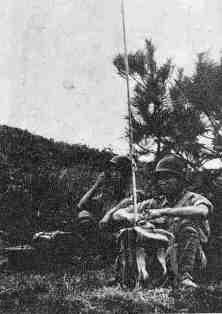 RANGE FINDING COMMUNICATED BY RADIO TO GUN BASE
RANGE FINDING COMMUNICATED BY RADIO TO GUN BASE
|
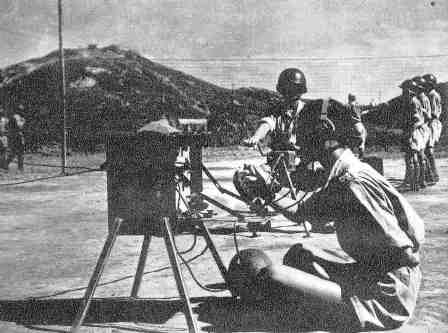 WIRELESS SENDING SET WITH HAND GENERATOR
WIRELESS SENDING SET WITH HAND GENERATOR
|
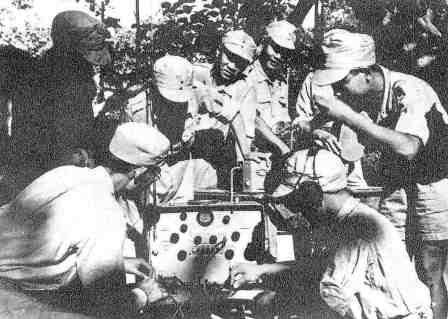 SIGNAL CORPS - THE EARS OF THE ARMY
SIGNAL CORPS - THE EARS OF THE ARMY
|
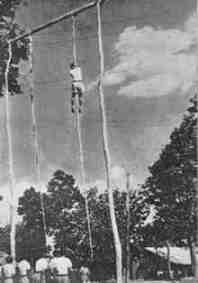 SWINGING POLE CLIMBING - A NECESSARY TECHNIQUE IN JUNGLE WARFARE
SWINGING POLE CLIMBING - A NECESSARY TECHNIQUE IN JUNGLE WARFARE
|
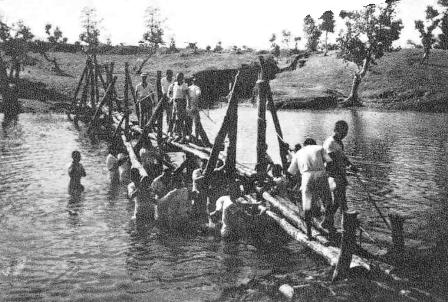 BRIDGE CONSTRUCTION BY THE ENGINEER CORPS
BRIDGE CONSTRUCTION BY THE ENGINEER CORPS
|
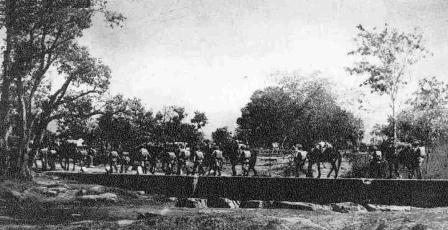 PACK ANIMALS TRANSPORT UNDER TRAINING
PACK ANIMALS TRANSPORT UNDER TRAINING
|
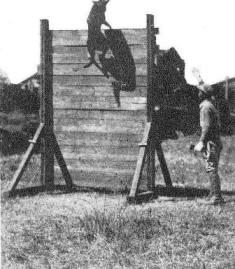 DOGS TRAINED FOR MILITARY INTELLIGENCE
DOGS TRAINED FOR MILITARY INTELLIGENCE
|
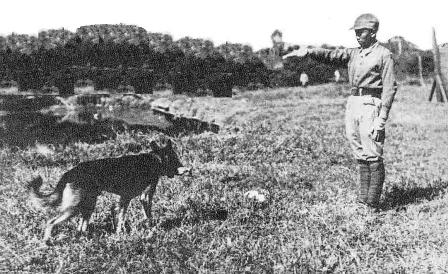 A DOG TRAINED AS MESSAGE CARRIER
A DOG TRAINED AS MESSAGE CARRIER
|
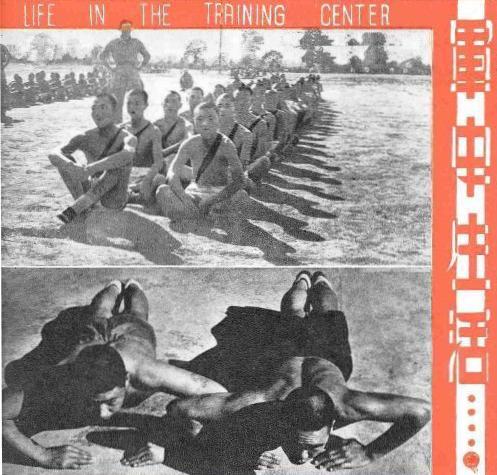 AT EASE (TOP) PHYSICAL DRILL (BOTTOM)
AT EASE (TOP) PHYSICAL DRILL (BOTTOM)
|
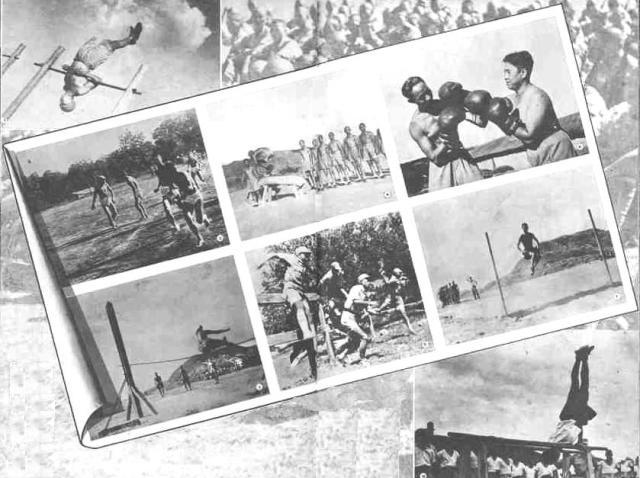 (1) LEVER DRILL (SINGLE) (TOP LEFT BACKGROUND)
(2) RELAY RACE (INSET TOP LEFT)
(3) HIGH JUMP (INSET BOTTOM LEFT)
(4) WOODEN-HORSE HIKING
(5) BARRICADE JUMPING
(6) BOXING
(7) BROAD JUMP
(8) LEVER DRILL (DOUBLE) (BOTTOM RIGHT BACKGROUND)
(1) LEVER DRILL (SINGLE) (TOP LEFT BACKGROUND)
(2) RELAY RACE (INSET TOP LEFT)
(3) HIGH JUMP (INSET BOTTOM LEFT)
(4) WOODEN-HORSE HIKING
(5) BARRICADE JUMPING
(6) BOXING
(7) BROAD JUMP
(8) LEVER DRILL (DOUBLE) (BOTTOM RIGHT BACKGROUND)
|
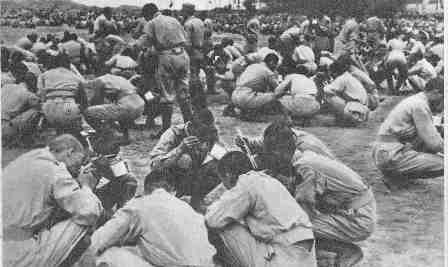 MESS AND FEEDING
MESS AND FEEDING
|
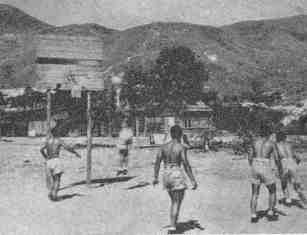 BASKETBALL
BASKETBALL
|
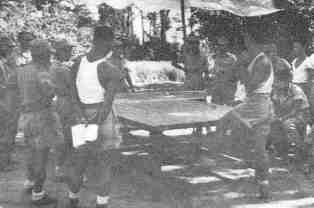 PING-PONG
PING-PONG
|
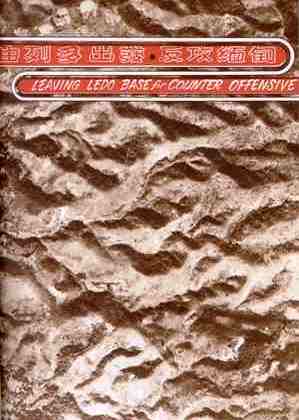 BIRDS-EYE VIEW OF JUNGLE MOUNTAINS
BIRDS-EYE VIEW OF JUNGLE MOUNTAINS
|
By the spring of 1943, the Army had fairly completed its training. The Burma Road had been closed for
a year, and China was in dire need of a new international supply route for the importation of war supplies. The time
came for launching a counter-offensive in Burma so that the supply line might be established. General Sun Li-jen, as
Advance Commander, led the New 38th Division as the vanguard of the campaign. From Ramgarh the Division returned to Ledo
and took up the duty in annihilating the enemy in the Hukawng Valley in order to safeguard the supply junction in India.
Ledo, a small hamlet on the edge of a primeval jungle, soon grew into a town with railroad extension from
the Indian trunk lines. With the influx of troops it also became an armed camp, the operation base for launching a
counter-offensive against the enemy in Burma and the springboard for an immediate campaign.
A further period of training in jungle fighting was given the New 38th Division before their actual
drive into Burma.
On the path of the campaigners lay an immense tract of wild jungles and swamps infested by harmful
animals, insects and brambles. Many lives had already been lost in this region during the Chinese troops' earlier
withdrawal from Burma into India. The memory of the past incited the Army to a full determination in accomplishing
their task.
Eight months were spent in hewing a mountain path through this region, driving away the enemy, and
allowing the engineers following in the wake of the Army to build the road.
Surmounting the almost unbelievable difficulties, the New 38th Division conquered the border jungle,
and in the early winter of 1943, occupied Shingbwiyang, which served as the advance base for the push towards the
Hukawng Valley.
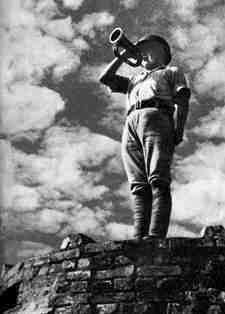 BUGLE CALL
BUGLE CALL
|
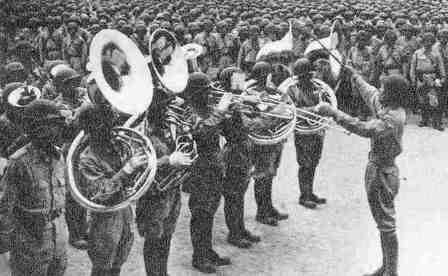 ATTENDED BY RANK AND FILE
ATTENDED BY RANK AND FILE
|
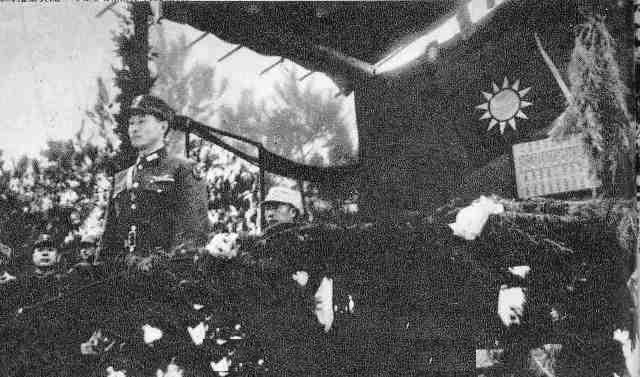 GENERAL SUN LI-JEN AT THE OATH-TAKING CEREMONY PRIOR TO MOVEMENT TO THE FRONT
GENERAL SUN LI-JEN AT THE OATH-TAKING CEREMONY PRIOR TO MOVEMENT TO THE FRONT
|
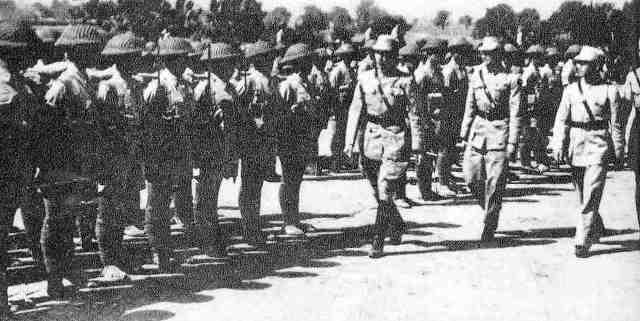 REVIEW HELD PRIOR TO MOVEMENT TO THE FRONT
REVIEW HELD PRIOR TO MOVEMENT TO THE FRONT
|
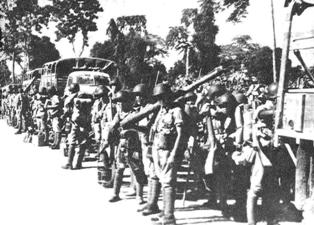 WAITING FOR ORDER TO MOVE FORWARD
WAITING FOR ORDER TO MOVE FORWARD
|
 PENETRATING THROUGH THE JUNGLE DEPTHS BEYOND THE HIGHWAY
PENETRATING THROUGH THE JUNGLE DEPTHS BEYOND THE HIGHWAY
|
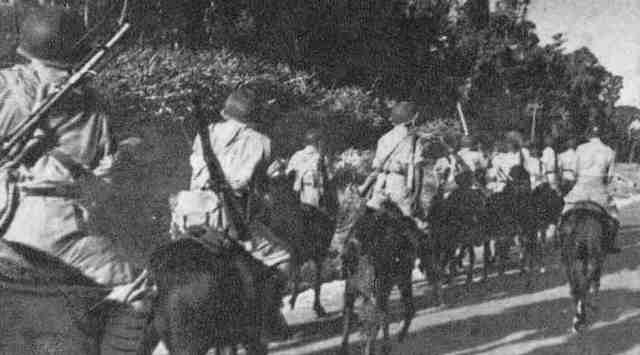 CAVALRY WORKING ITS WAY THROUGH THE BUSHES ALWAYS ON ALERT FOR SNIPERS
CAVALRY WORKING ITS WAY THROUGH THE BUSHES ALWAYS ON ALERT FOR SNIPERS
|
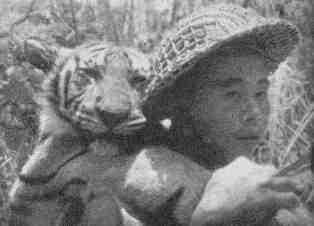 DELICACIES ABOUND IN THE JUNGLE HILLS
DELICACIES ABOUND IN THE JUNGLE HILLS
|
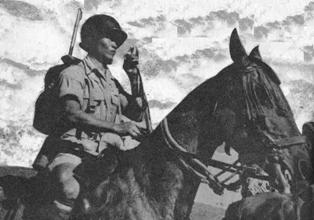 CAVALRY SEARCH PARTY COMMUNICATING WITH OUTPOSTS THROUGH RADIO
CAVALRY SEARCH PARTY COMMUNICATING WITH OUTPOSTS THROUGH RADIO
|
 MOUNTAIN GUN ARTILLERY TO THE FRONT
MOUNTAIN GUN ARTILLERY TO THE FRONT
|
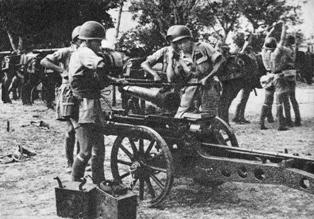 SETTING OUT FROM LEDO BASE
SETTING OUT FROM LEDO BASE
|
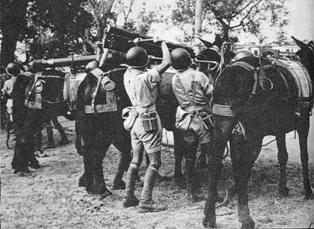 READY FOR CHARGE
READY FOR CHARGE
|
 HORSEBACK TRANSPORTATION OF AMMUNITION AND SUPPLIES
HORSEBACK TRANSPORTATION OF AMMUNITION AND SUPPLIES
|
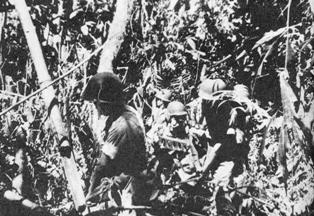 JUNGLES PENETRATED BY BLAZING NEW ROADS
JUNGLES PENETRATED BY BLAZING NEW ROADS
|
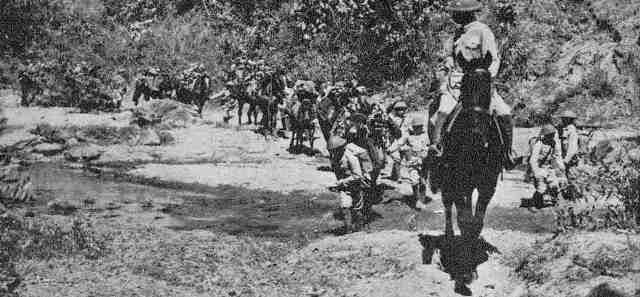 PACK ANIMAL CARAVAN WADING THROUGH FLOODED REGIONS
PACK ANIMAL CARAVAN WADING THROUGH FLOODED REGIONS
|
The Hukawng Valley was one of the most atrategic important areas in the Burma campaign. The 18th
Japanese Division, accredited as the enemy's "invincible" force, held sway over the area.
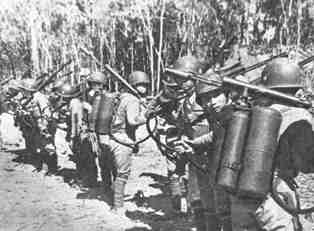 DETACHMENT OF FLAME-THROWERS
DETACHMENT OF FLAME-THROWERS
|
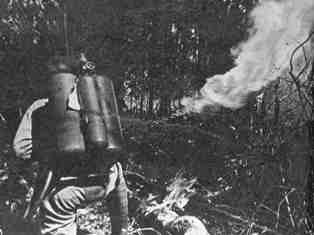 FLAME-THROWERS DIRECTED ON THE ENEMY LINE
FLAME-THROWERS DIRECTED ON THE ENEMY LINE
|
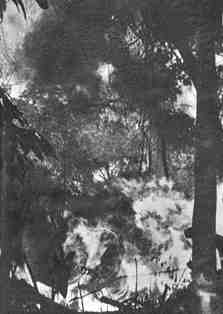 FLAME-THROWERS DIRECTED ON THE ENEMY LINE
FLAME-THROWERS DIRECTED ON THE ENEMY LINE
|
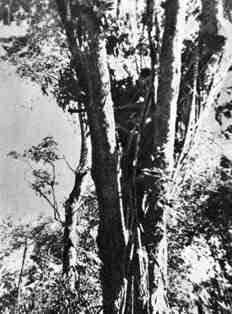 TREE TRUNK TUNED INTO STRONGHOLD BY DEFENSE FORCE AT YUPONG GA AGAINST THE ENEMY ADVANCE
TREE TRUNK TUNED INTO STRONGHOLD BY DEFENSE FORCE AT YUPONG GA AGAINST THE ENEMY ADVANCE
|
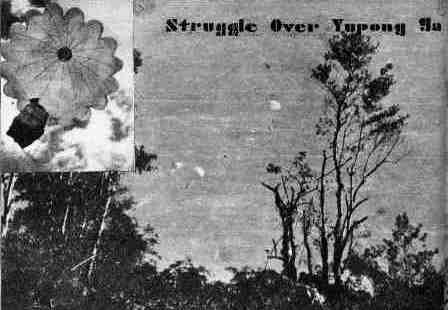 TRANSPORT PLANES DROPPING SUPPLIES TO AID THE DETACHMENTS OF ALLIED FORCES UNDER SIEGE
TRANSPORT PLANES DROPPING SUPPLIES TO AID THE DETACHMENTS OF ALLIED FORCES UNDER SIEGE
|
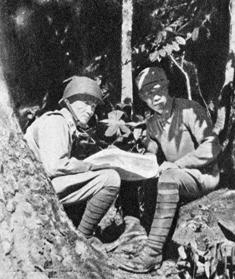 GENERAL SUN CONFERRING WITH MAJ. GEN. LI HUNG ON THE TACTICS FOR THE ATTACK ON YUPONG GA
GENERAL SUN CONFERRING WITH MAJ. GEN. LI HUNG ON THE TACTICS FOR THE ATTACK ON YUPONG GA
|
|
The Battle for Yupong Ga
The battle for Yupong Ga was the first fierce encounter in the counter-offensive in Burma. Chinese Army
encountered an enemy force five times its own strength, and there was encirclement and re-encirclement of each other
during the whole campaign. One battalion of the 112th Regiment was cut off from contact for 36 days, depending on
supplies dropped by planes. Casualties suffered by both fighting parties were high.
On December 21, 1944, General Sun Li-jen personally led a rescue party and with courage and strategy
completely routed a most obstinate enemy force, heralding other suvvesses that were to follow in the campaign.
General Stilwell presented General Sun with a special pennant to commemorate this unprecedented victory.
The Battle for Taipha Ga
The enemy now entrenched himself at Taipha Ga. For the first time, the Chinese Army adopted the strategy
of "swirving" fighting and divided forces to attack on all flanks. On February 1, the forces attacking the enemy's left
scored such successes that the enemy was forced to abandon his plan of defensive fighting and come out in the open,
to be defeated and routed.
The Victories at Maingkwan and Walawbum
The building of the India-China Road had by this time made considerable headway, that the New 22nd Division
was now able to launch forward from Ledo into the Hukawng Valley. After taking Taro in January the Division marched
southwards toward Maingkwan, assisted by the 1st Tank Battalion in a joint operation. An American Regiment transferred
from the South Pacific also joined in the campaign.
In the battle of Maungyang River, the 114th Regiment captured secret orders issued by the enemy and the
New 38th Division was thus enabled to proceed to behind the southern lines of the enemy and cut off his retreat.
On March 4, the enemy was surprised at Maingkwan, which fell the following day.
The New 38th Division pushed on towards Walawbum, the last enemy stronghold in the Hukawng Valley.
The enemy put up a stiff resistance at this point for four days, and casualties were heavy, no less than 757 corpses
were left by him after the fall of the place.
With the capture of Walawbum on March 9, the campaign in the Hukawng Valley was brought to a successful end.
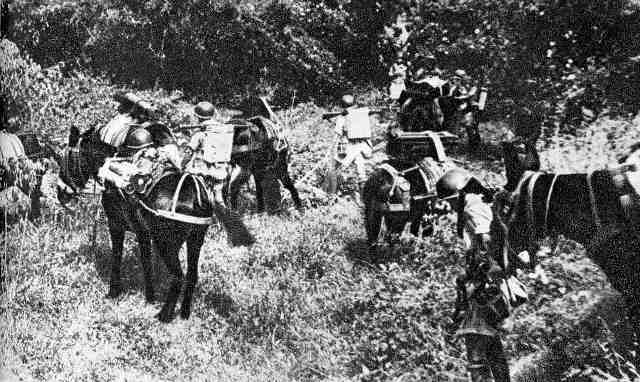 PLACING GUN POSITIONS IN JUNGLE
PLACING GUN POSITIONS IN JUNGLE
|
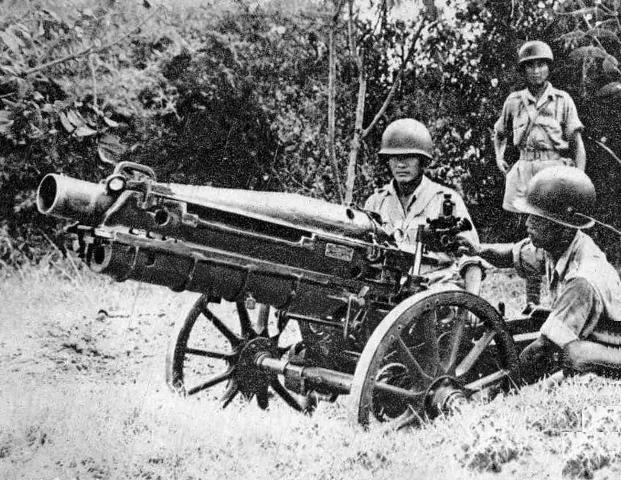 CLEARED FOR ACTION
CLEARED FOR ACTION
|
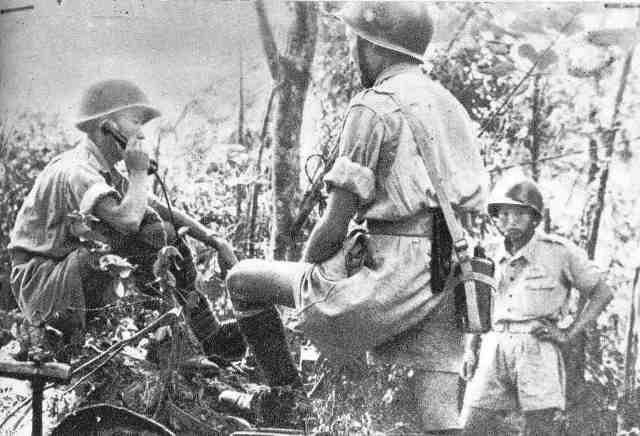 FRONT-LINE OFFICER REPORTING THE WAR SITUATION THROUGH RADIO TO THE COMMAND POST
FRONT-LINE OFFICER REPORTING THE WAR SITUATION THROUGH RADIO TO THE COMMAND POST
|
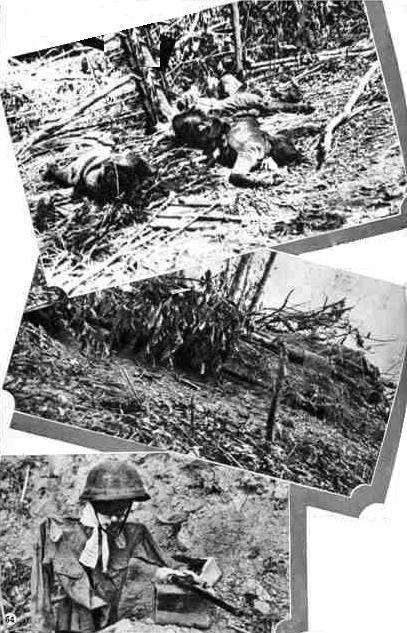 TOP: CASUALTIES LEFT BY THE FLEEING ENEMY.
MIDDLE: EVACUATED POSITION DESTROYED BY SEVERE BOMBARDMENT.
BOTTOM: DUMMIES USED BY THE ENEMY AS SHOCK ABSORBERS.
TOP: CASUALTIES LEFT BY THE FLEEING ENEMY.
MIDDLE: EVACUATED POSITION DESTROYED BY SEVERE BOMBARDMENT.
BOTTOM: DUMMIES USED BY THE ENEMY AS SHOCK ABSORBERS.
|
|
The Capture of Laban
Between the Hukawng Valley and the Mogaung Valley lies a 4,000-foot hill. A small path provides the
only link between the two valleys. The New 22nd Division, with the Tank Corps, launched a frontal attack against the
Mogaung Valley, while the New 38th Division, braving all difficulties of cliff climbing, went over to the back of the
enemy.
Fourteen days' arduous hill climbing brought the New 38th Division to a point 20 miles to the rear of
the enemy, and Laban was taken immediately to cut off the enemy retreat. Meanwhile, the New 22nd Division also advanced
against the enemy from the north and the two forces effected a junction at Shadazup.
Surprise Attack on Seton
The enemy took full advantage of the mountainous terrain of the Mogaung Valley in laying defense positions.
The rainy season in Burma was approaching by the end of May, and advance was checked. The New 22nd Division was held
by the enemy at Malakawng. General Sun Li-jen considered it necessary to employ special strategy if the Mogaung war
was to be concluded before the full blast of the rainy weather. A bolder attempt to send a regiment to the rear of the
enemy was made. The 112th Regiment chosen for the purpose ran the enemy blockade across the Namkawng River, and took
by surprise Seton, five miles to the rear of enemy-held Kamaing on May 26. Confusion was poured into enemy ranks.
The enemy rushed reinforcements for the relief of the position, and during the fierce fighting that
ensued, heavy casualties were inflicted on his troops, while the Chinese also suffered more than 300 losses.
The Forced Crossing of Namkawng River and the Capture of Kamaing
The loss of Seton sealed the fate of the enemy in Kamaing. From May 29, Zigyun on the bank opposite Kamaing
was subjected to bombardment and it fell on June 9. On the morning of June 16, a forced crossing was made, the wait
being occasioned by the need to obtain supplies of rubber boats. The enemy had lost his morale, and the capture was
imminent.
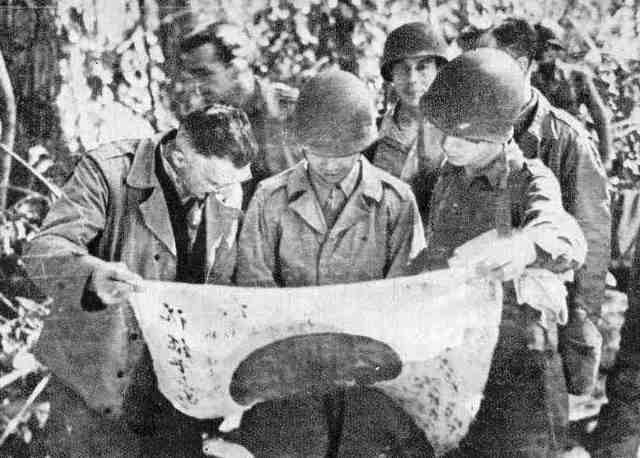 GENERAL STILWELL ON AN INSPECTION TOUR STUDYING A RECENTLY CAPTURED FLAG
GENERAL STILWELL ON AN INSPECTION TOUR STUDYING A RECENTLY CAPTURED FLAG
|
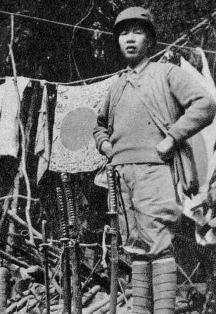 MAJ. GEN. LI HUNG TAKING ACCOUNT OF THE TROPHIES CAPTURED BY HIS MEN
MAJ. GEN. LI HUNG TAKING ACCOUNT OF THE TROPHIES CAPTURED BY HIS MEN
|
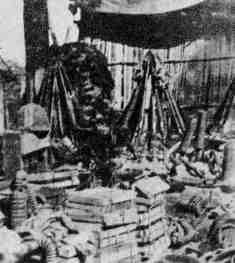 TROPHIES CAPTURED IN THE BATTLE OF WALAWBUM
TROPHIES CAPTURED IN THE BATTLE OF WALAWBUM
|
The Fight for Mogaung City
While the 113th Regiment was still attacking Zigyun, the 114th Regiment had proceeded rapidly towards
Mogaung City. By June 15, many points to the north of the city had been placed under control. At the same time,
the 77th British Brigade which paratrooped into Katha two months previously was being encircled by the enemy and the
Chinese came to their rescue in time. The city itself was captured after two days of hard fighting.
Enemy troops along the road from Kamaing to Mogaung still offered resistance despite the fall of both
cities. They were duly taken care of.
The battle of the Mogaung Valley had been successfully concluded.
General Stilwell, in a telegram congratulating General Sun Li-jen, referred to the victory as a top-notch
achievement.
The Divisional Commander of the 3rd British Indian Division congratulated General Sun and General
Li-hung for the great victory, and expressed gratitude for the assistance rendered the 77th British Brigade.
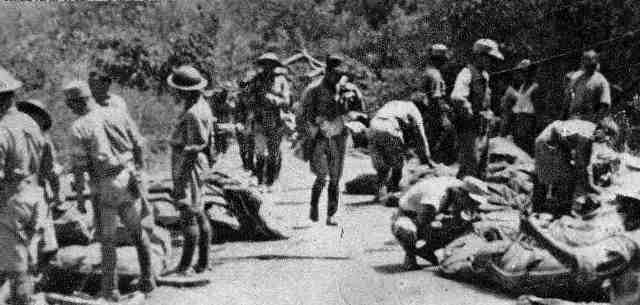 RUBBER PONTOONS USED IN BURMA DURING RAINING SEASON
RUBBER PONTOONS USED IN BURMA DURING RAINING SEASON
|
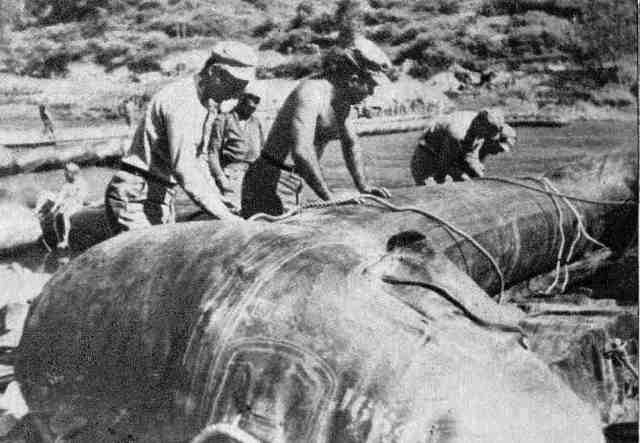 BRIDGE UNDER CONSTRUCTION
BRIDGE UNDER CONSTRUCTION
|
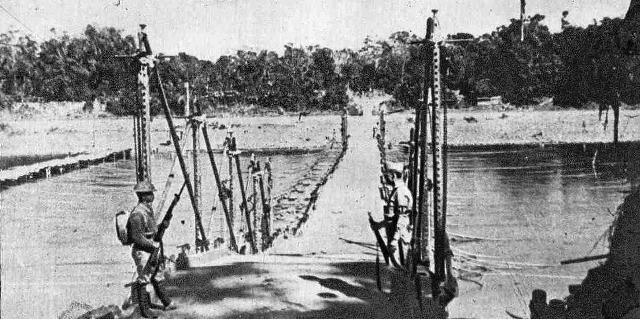 CHINESE SOLDIERS TOGETHER WITH U.S. MPs GUARDING A PONTOON BRIDGE ERECTED ON TARUN HKA AFTER THE CAPTURE OF YUPONG GA
AND TAIPHA GA
CHINESE SOLDIERS TOGETHER WITH U.S. MPs GUARDING A PONTOON BRIDGE ERECTED ON TARUN HKA AFTER THE CAPTURE OF YUPONG GA
AND TAIPHA GA
|
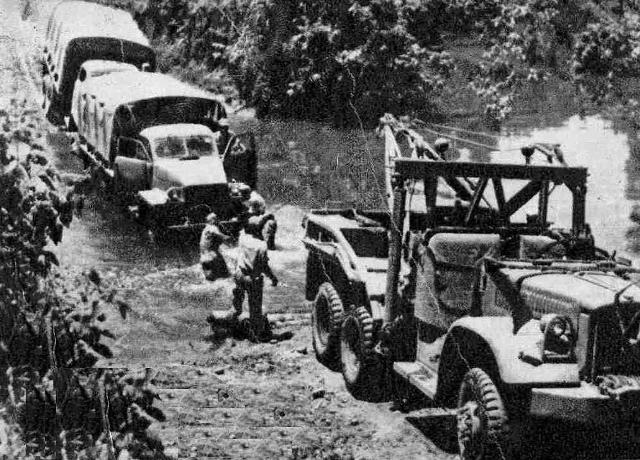 WRECKER USED TO PULL TRUCKS THROUGH JUNGLE MIRES
WRECKER USED TO PULL TRUCKS THROUGH JUNGLE MIRES
|
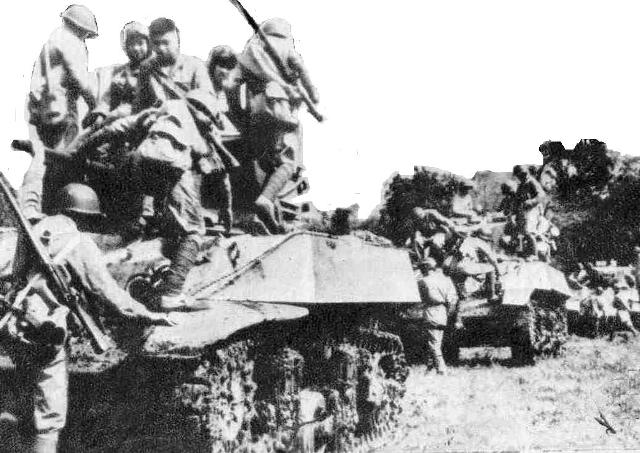
|
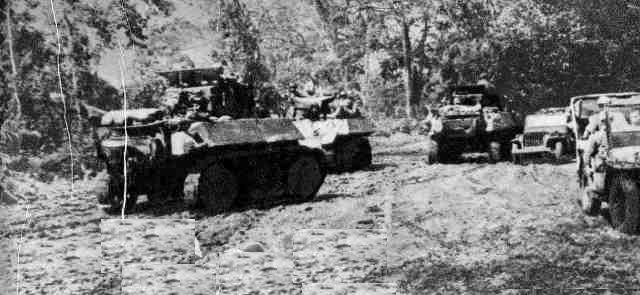 TANK CORPS IN ADVANCE TO THE FRONT
TANK CORPS IN ADVANCE TO THE FRONT
|

|
 GENERAL STILWELL CONFERS WITH LT. GEN. SUN LI-JEN, MAJ. GEN. LI HUNG AND MAJ. GEN. HO CHUN-HENG
GENERAL STILWELL CONFERS WITH LT. GEN. SUN LI-JEN, MAJ. GEN. LI HUNG AND MAJ. GEN. HO CHUN-HENG
|
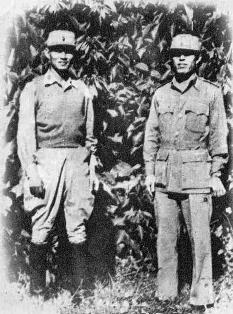 GENERAL CHENG TUNG-KUO CONFERRING WITH GENERAL SUN AT THE FRONT
GENERAL CHENG TUNG-KUO CONFERRING WITH GENERAL SUN AT THE FRONT
|
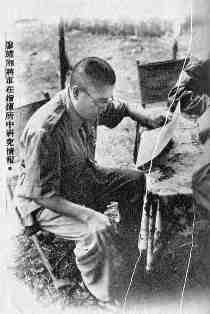 GENERAL LIAO YAO-HSIANG DISCUSSING INTELLIGENCE AT HIS COMMAND POST
GENERAL LIAO YAO-HSIANG DISCUSSING INTELLIGENCE AT HIS COMMAND POST
|
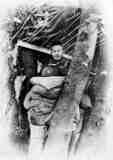 GENERAL SUN DIRECTING THE ASSAULT UNDER COVER OF A BANYAN TREE
GENERAL SUN DIRECTING THE ASSAULT UNDER COVER OF A BANYAN TREE
|
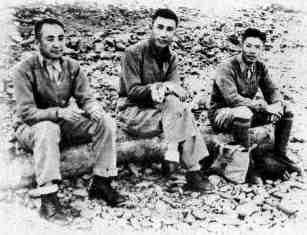 MAJ. GENS. HO CHUN-HENG, TANG SHOU-CHIH AND KO NAN-SHAN OF NEW 38TH DIVISION RESTING BY RIVER SHORE DURING ONE
OF THE FRONT LINE INSPECTION TOURS
MAJ. GENS. HO CHUN-HENG, TANG SHOU-CHIH AND KO NAN-SHAN OF NEW 38TH DIVISION RESTING BY RIVER SHORE DURING ONE
OF THE FRONT LINE INSPECTION TOURS
|
 GENERAL SUN IN THE COMMUNICATION TRENCH
GENERAL SUN IN THE COMMUNICATION TRENCH
|
|
VICTORY OF MAINGKWAN AND WALAWBUM
|
 AT THE CAPTURE OF TAIPHA GA BY THE NEW FIRST ARMY, A U.S. INFANTRY REGIMENT ARRIVED AT THE HUKAWNG VALLEY, IN
JOINT OPERATION WITH THEIR CHINESE ALLIES.
AT THE CAPTURE OF TAIPHA GA BY THE NEW FIRST ARMY, A U.S. INFANTRY REGIMENT ARRIVED AT THE HUKAWNG VALLEY, IN
JOINT OPERATION WITH THEIR CHINESE ALLIES.
|
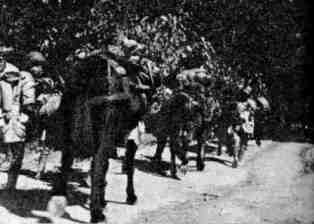 FORCES OF THE NEW 22ND DIVISION WHICH STARTED FROM LEDO IN THE EARLY SPRING OF 1944 CAPTURED SEVERAL STRATEGIC
POINTS ON THEIR WAY TO INVADE MAINGKWAN
FORCES OF THE NEW 22ND DIVISION WHICH STARTED FROM LEDO IN THE EARLY SPRING OF 1944 CAPTURED SEVERAL STRATEGIC
POINTS ON THEIR WAY TO INVADE MAINGKWAN
|
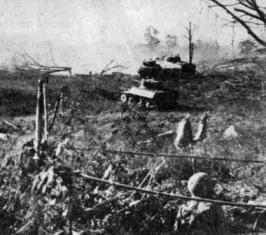 NEW 22ND DIVISION WITH THE TANK CORPS ON ATTACK AT MAINGKWAN
NEW 22ND DIVISION WITH THE TANK CORPS ON ATTACK AT MAINGKWAN
|
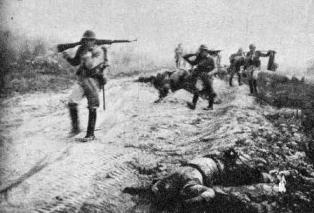 CORPSES LEFT BY THE FLEEING ENEMY
CORPSES LEFT BY THE FLEEING ENEMY
|
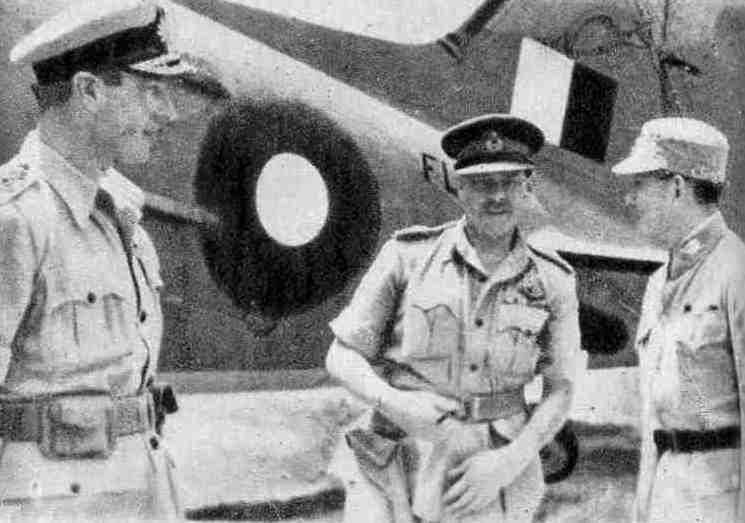 ADMIRAL MOUNTBATTEN CALL ON GENERAL SUN LI-JEN
ADMIRAL MOUNTBATTEN CALL ON GENERAL SUN LI-JEN
|
Before the commencement of the battle in the Mogaung Valley, the New 30th Division of the New First
Army had already been trained intoi a combattant unit. It was further reinforced by the 14th and 50th Divisions,
airborne into Burma.
With the exception of the 149th Regiment of the 50th Division, the various units making up the three
Divisions referred to in the first paragraph did not participate in the battle in the Mogaung Valley. They created a new
battlefield for themselves.
In the latter part of April, while the fighting in the Mogaung Valley was in progress, another force
consisting of the 88th Regiment of the New 30th Division, the 150th Regiment of the 50th Division, and a regiment
of United States infantrymen was concentrated at Maingkwan, and pushed southeastward for a surprise attack on
Myitkyina.
On May 19, the railway station was occupied for a time.
Further reinforcements arrived on May 21 from Ledo, this being the 42nd Regiment of the 14th Division.
The enemy, meanwhile, took advantage of the respite in sending for help and in consolidating his defense
positions.
The combating forces were interlocked against each other from May to mid July, when the battle reached the
decisive stage. On August 3, the 50th Division organized a Dare-to-Die Corps which broke down the last of the enemy's
stubborn resistance.
 MOTORIZED UNIT PENETRATING THROUGH ENEMY STRATEGIC PASS OF JAMBUBUM TO MOGAUNG
MOTORIZED UNIT PENETRATING THROUGH ENEMY STRATEGIC PASS OF JAMBUBUM TO MOGAUNG
|
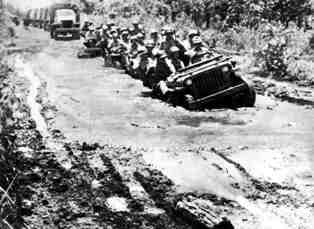 MUD, AS A RESULT OF HEAVY RAINFALL, MADE THE PASSAGE EXTREMELY DIFFICULT.
MUD, AS A RESULT OF HEAVY RAINFALL, MADE THE PASSAGE EXTREMELY DIFFICULT.
|
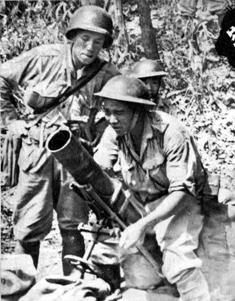 TRENCH MORTARS SUPPLANTING HEAVY WEAPONS IN THE LOFTY HEIGHT OF KUMON BUM
TRENCH MORTARS SUPPLANTING HEAVY WEAPONS IN THE LOFTY HEIGHT OF KUMON BUM
|
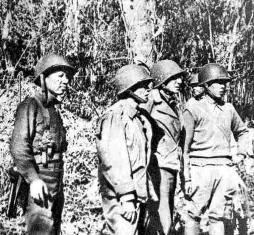 PLANS WERE MADE TO LAUNCH A SURPRISE ATTACK ON KAMAING AFTER GENERAL STILWELL AND GENERAL SUN MADE AN INSPECTION
TOUR TO THE FRONT AND STUDIED THE SITUATION
PLANS WERE MADE TO LAUNCH A SURPRISE ATTACK ON KAMAING AFTER GENERAL STILWELL AND GENERAL SUN MADE AN INSPECTION
TOUR TO THE FRONT AND STUDIED THE SITUATION
|
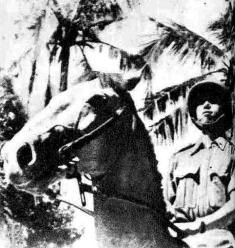 COLONEL CHEN MING-JEN, COMMANDER OF THE 112TH REGIMENT, IN CHARGE OF THE ASSAULT.
COLONEL CHEN MING-JEN, COMMANDER OF THE 112TH REGIMENT, IN CHARGE OF THE ASSAULT.
|
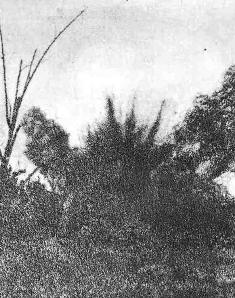 CLOUDS CREATED BY BURSTS FROM OUR GUN FIRES
CLOUDS CREATED BY BURSTS FROM OUR GUN FIRES
|
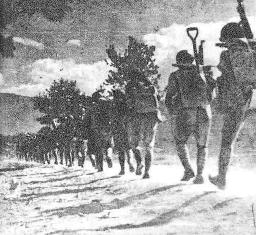 LIGHT EQUIPPED DETACHMENTS READY TO MOVE FORWARD ACCORDING TO PLANS
LIGHT EQUIPPED DETACHMENTS READY TO MOVE FORWARD ACCORDING TO PLANS
|
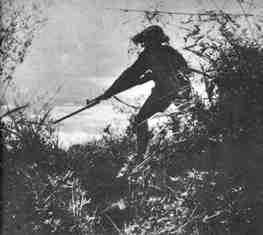 SMASHING THROUGH
SMASHING THROUGH
|
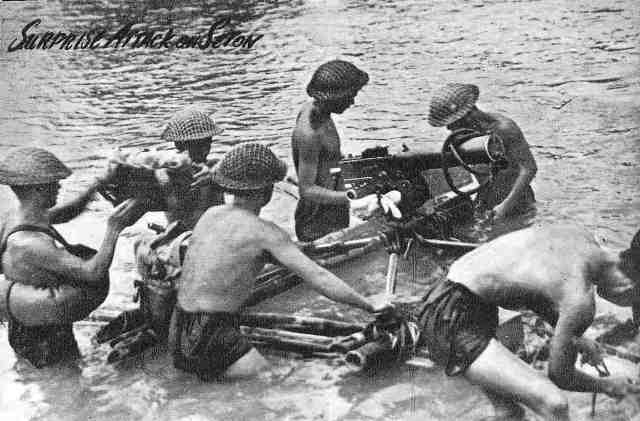 NAMKAUNG RIVER WAS CROSSED AT SETON SOUTH OF KAIMAING
NAMKAUNG RIVER WAS CROSSED AT SETON SOUTH OF KAIMAING
|
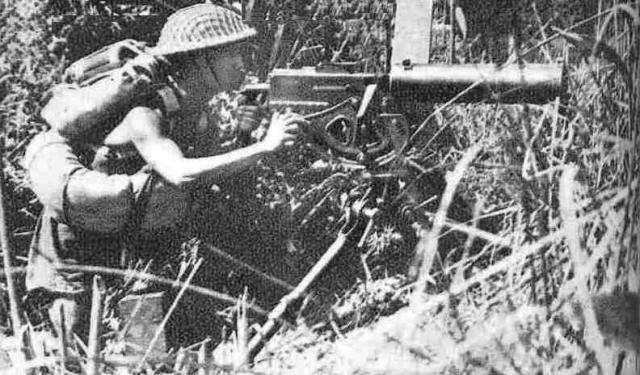 ENCOUNTERING THE ENEMY IMMEDIATELY AFTER THE CROSSING OF NAMKAUNG RIVER
ENCOUNTERING THE ENEMY IMMEDIATELY AFTER THE CROSSING OF NAMKAUNG RIVER
PLAIN-CLOTHED MACHINE-GUNNERS INFILTRATED INTO ENEMY POSITIONS
|
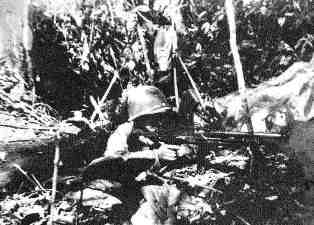 LIGHT MACHINES-GUNNERS GETTING CLOSE ON THE SUBURBS OF KAMAING
LIGHT MACHINES-GUNNERS GETTING CLOSE ON THE SUBURBS OF KAMAING
|
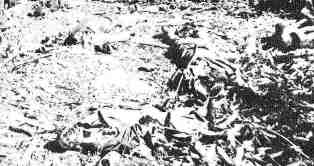 CAPTURE OF KAMAING. THE FLEEING ENEMY LEFT NUMBERLESS CORPSES BEHIND.
CAPTURE OF KAMAING. THE FLEEING ENEMY LEFT NUMBERLESS CORPSES BEHIND.
|
 HEAVY MACHINE GUN FIRING ON ENEMY LINE
HEAVY MACHINE GUN FIRING ON ENEMY LINE
|
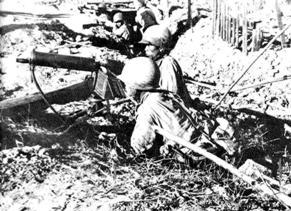 ADVANCING YARD BY YARD
ADVANCING YARD BY YARD
|
 HEARTY WELCOME ACCORDED TO THE VICTORIOUS CHINESE TROOPS BY THE POPULACE OF MOGAUNG
HEARTY WELCOME ACCORDED TO THE VICTORIOUS CHINESE TROOPS BY THE POPULACE OF MOGAUNG
|
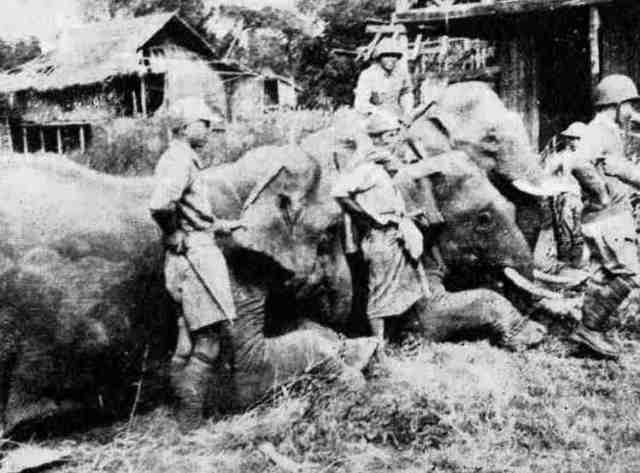 "ELEPHANT CAVALRY" CAPTURED IN THE BATTLE OF MOGAUNG
"ELEPHANT CAVALRY" CAPTURED IN THE BATTLE OF MOGAUNG
|
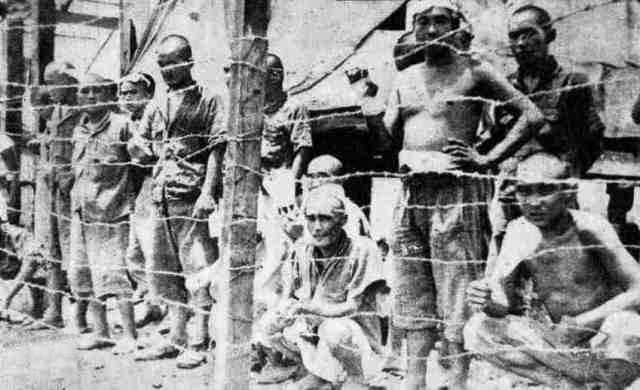 A GROUP OF WAR PRISONERS
A GROUP OF WAR PRISONERS
|
 MISS FANG YEN, TYPICAL OF THE CHINESE NURSES ACTIVE ON THE NORTH BURMA FRONT.
MISS FANG YEN, TYPICAL OF THE CHINESE NURSES ACTIVE ON THE NORTH BURMA FRONT.
|
FIRST AID SERVICE GIVEN TO WOUNDED OFFICERS
AND MEN BY U.S. AND CHINESE FIELD HOSPITAL
|
In the Burma Campaign, the Chinese and Americans undertook two different tasks. The first were engaged
in fighting, the latter in transportation and supplies and their cooperation made success possible.
In addition to transportation and supply, the work of giving first aid was also undertaken by the
service forces.
Ambulance and first aid work during the Burma Campaign was most satisfactory. From field surgeons tp
field hospitals, station hospitals to base hospitals everywhere the work of giving medical attention to the needy
was carried out efficiently and satisfactorily thus reducing the suffering of the wounded to a minimum.
The medical services were so satisfactory that during the Burma Campaign many soldiers returned to the
front after being wounded many times over. No less than 18 men had been wounded six times. Excepting those who fell in
actual fighting, a very high percentage of the wounded recovered and were fit for service after treatment.
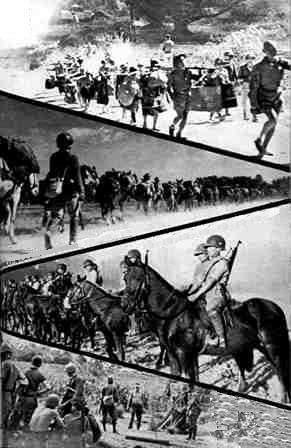 TOP TO BOTTOM: KITCHEN CORPS
TOP TO BOTTOM: KITCHEN CORPS
A DETACHMENT ON MARCH FROM MAINGKWAN
THE CAVALRY GOT READY TO MARCH ON
A DETACHMENT OF U.S. FORCE AT REST
|
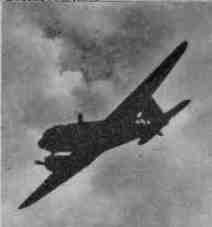 ARMY TRANSPORTS AND GLIDERS CONSOLIDATE THE OCCUPATION
ARMY TRANSPORTS AND GLIDERS CONSOLIDATE THE OCCUPATION
|
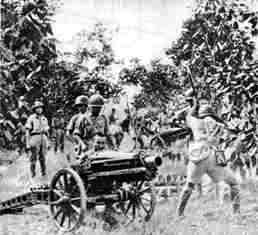 THE ARTILLERY CONSTRUCTING GUN POSITIONS
THE ARTILLERY CONSTRUCTING GUN POSITIONS
|
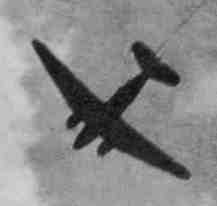 GLIDERS LED BY TRANSPORT PLANES DIRECTED TOWARDS MYITKYINA
GLIDERS LED BY TRANSPORT PLANES DIRECTED TOWARDS MYITKYINA
|
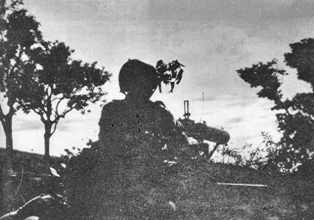 HEAVY MACHINE GUN FIRING FROM A VANTAGE POINT
HEAVY MACHINE GUN FIRING FROM A VANTAGE POINT
|
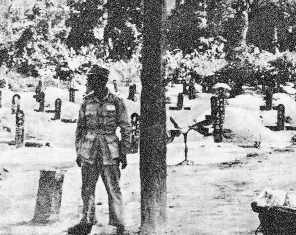 CEMETARY OF OFFICERS AND MEN WHO GAVE THEIR LIVES IN THE NORTH BURMA CAMPAIGN
CEMETARY OF OFFICERS AND MEN WHO GAVE THEIR LIVES IN THE NORTH BURMA CAMPAIGN
|
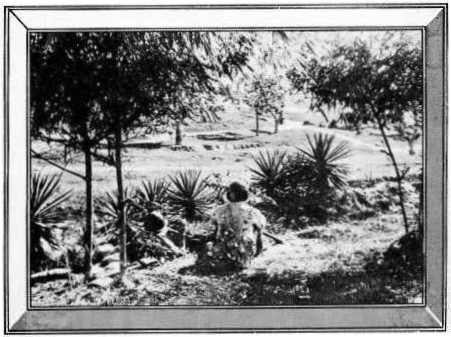 GLEAMING BATTLEFIELD OR PICTURESQUE LANDSCAPE
GLEAMING BATTLEFIELD OR PICTURESQUE LANDSCAPE
|
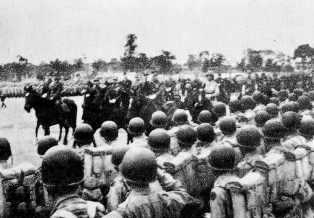 THE CHINESE NATIONAL HOLIDAY (OCTOBER 10) WAS CELEBRATED BY THE NEW FIRST ARMY IN MYITKYINA WITH A MILITARY PARADE
THE CHINESE NATIONAL HOLIDAY (OCTOBER 10) WAS CELEBRATED BY THE NEW FIRST ARMY IN MYITKYINA WITH A MILITARY PARADE
|
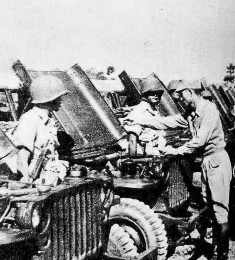 GENERAL SUN CONDUCTED AN INSPECTION OF THE MOTORIZED FORCES IN MYITKYINA
GENERAL SUN CONDUCTED AN INSPECTION OF THE MOTORIZED FORCES IN MYITKYINA
|
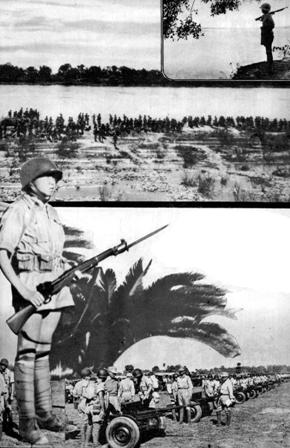
|
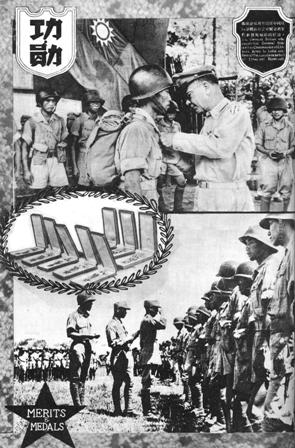
|
LEFT GROUPING TOP: THE PEACEFUL IRRAWADDY. BOTTOM: GUARDIANS OF PEACE.
RIGHT GROUPING TOP: LT. GEN. SULTAN WHO SUCCEEDED GEN. STILWELL AS COMMANDER OF CHINESE ARMY IN INDIA CONFERRED THE
MEDALS ON BEHALF OF PRESIDENT ROOSEVELT. BOTTOM: OFFICERS AND SOLDIERS OF THE NEW 38TH DIVISION WERE DECORATED BY
THEIR DIVISIONAL COMMANDER, MAJ. GEN. LI HUNG.
The New First Army rested at Myitkyina for nearly two months. By October, the rainy season in Northern
Burma was over, the C.A.I. launched its second major offensive. The New First Army was to launch a frontal attack on
Bhamo, while the New 6th Army was to head towards Shwegu from the left. The last named post was captured on October
29, after which the New 6th Army was recalled to China Theater and the Burma Campaign thenceforth was solely undertaken
by the New First Army.
From Myitkyina to Bhamo was mountainous terrain, which was helpful to the defense and provided
difficulties for the attackers.
During its march towards Bhamo, the New First Army unearthed en route a stone memorial of great historical
importance. It was a commemorating tablet of one of the Chinese expeditions to the district in the Ming Dynasty, and
characters "Wei Yuan Ying" (Overwhelming Afar Barracks) were boldly engraved on the center of the tablet. A description
of the events leading to the erection of the memorial testified to the military operations and established the
strategic importance of Bhamo even in those old days.
Early in November, the New 38th Division had registered great progress in the advance. At this juncture,
the Army made use of the great suspension bridge which had been built by one of the famous Chinese generals who undertook
one of the expeditions into Burma during the Tsing dynasty.
The enemy made full use of the boggy nature of the terrain at Bhamo in laying his defense positions
which, it was later made known, took eight months to build.
By November 16, the Chinese Army had taken the suburban regions and three of the airfields. The enemy
retreated to the inner defenses within the city, and offered stiff resistance. He was immediately encircled.
Street fighting ensued and the Chinese encirclement of the enemy was gradually tightened. The city of
Bhamo was completely captured on December 15. The enemy was completely wiped out, and a large booty was captured.
To commemorate this signal victory, the Allied Supreme Command in Northern Command named the road from
Memauk to Bhamo the Sun Li-jen Highway, while a street in Bhamo was renamed Li Hung Road.
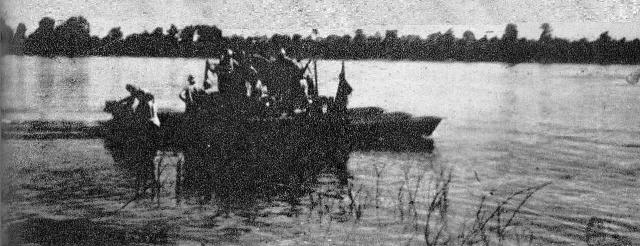 CROSSING THE IRRAWADDY - MOUNTAIN GUNS AND THEIR CARRIERS
CROSSING THE IRRAWADDY - MOUNTAIN GUNS AND THEIR CARRIERS
|
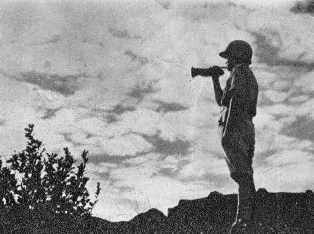 A SECOND OFFENSIVE WAS LAUNCHED
A SECOND OFFENSIVE WAS LAUNCHED
|
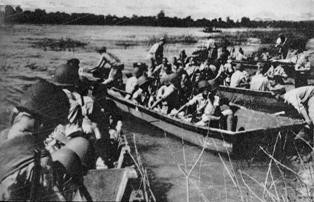 TROOPS CROSSING THE IRRAWADDY
TROOPS CROSSING THE IRRAWADDY
|
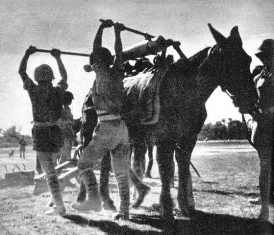 MOUNTAIN PIECES MOUNTED ON HORSEBACK AFTER RIVER CROSSING
MOUNTAIN PIECES MOUNTED ON HORSEBACK AFTER RIVER CROSSING
|
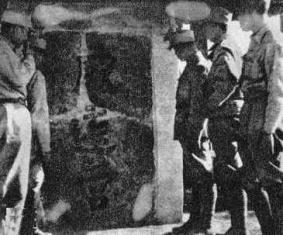 "MING" TABLET COMMEMORATING CHINA'S ANCIENT VICTORY UNEARTHED AT MINOTI
"MING" TABLET COMMEMORATING CHINA'S ANCIENT VICTORY UNEARTHED AT MINOTI
|
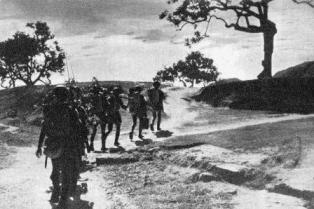 ADVANCE GUARDS ON THE MOVE
ADVANCE GUARDS ON THE MOVE
|
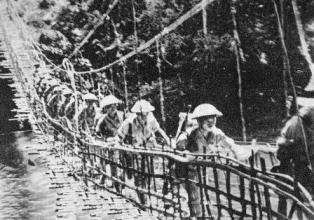 STORMING BHAMO BY CROSSING THE SUSPENSION BRIDGE
STORMING BHAMO BY CROSSING THE SUSPENSION BRIDGE
|
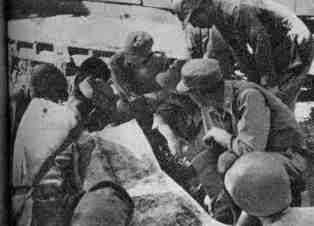 ENEMY PRISONER BEING QUESTIONED
ENEMY PRISONER BEING QUESTIONED
BY GENERAL AND HIS STAFF
|
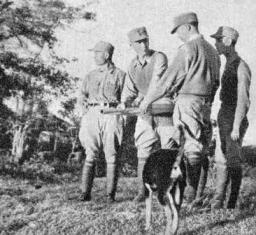 FINDINGS BEING STUDIED TO FORMULATE PLANS FOR NEW DRIVE
FINDINGS BEING STUDIED TO FORMULATE PLANS FOR NEW DRIVE
|
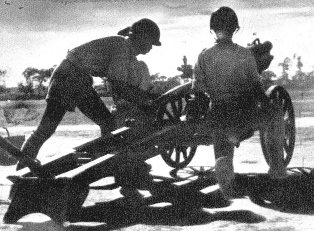 CLOSE ON BHAMO UNDER GUNFIRE
CLOSE ON BHAMO UNDER GUNFIRE
|
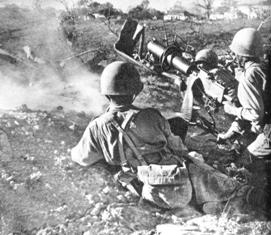 STORMING OF BHAMO
STORMING OF BHAMO
|
 LIGHT MACHINE GUNNERS READY TO JUMP OVER
LIGHT MACHINE GUNNERS READY TO JUMP OVER
|
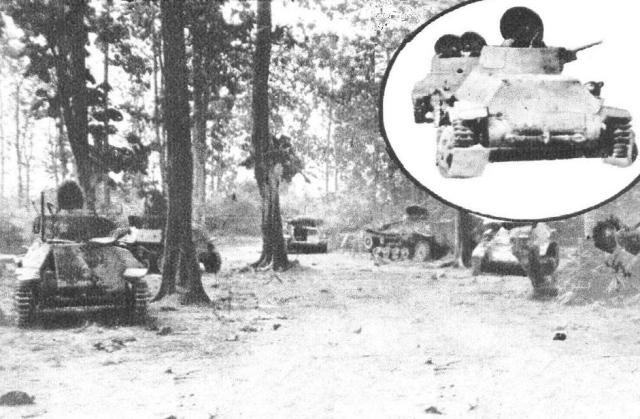 AMONG THE TROPHIES CAPTURED IN BHAMO WERE OVER TEN JAP TANKS
AMONG THE TROPHIES CAPTURED IN BHAMO WERE OVER TEN JAP TANKS
|
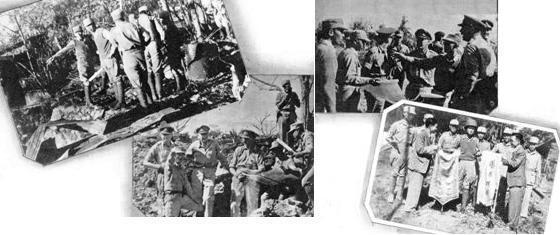 HIGH-RANKING OFFICERS MADE AN INSPECTION OF BHAMO AFTER OCCUPATION BY THE CHINESE FORCES
HIGH-RANKING OFFICERS MADE AN INSPECTION OF BHAMO AFTER OCCUPATION BY THE CHINESE FORCES
|
While the battle for Bhamo was still in progress, General Sun Li-jen ordered the New 30th Division
to proceed forward beyond Bhamo, heading for Namhkam.
The Battle at Kaibtik
The enemy was given a surprise by the New 30th Division's march on Namhkam while the New 38th
Division was still fighting for Bhamo. Reinforcements were brought in hurriedly in an attempt to disperse the
New 30th Division and thence to go to the relief of Bhamo. These forces, recently transferred from Korea, met the
New 30th Division at the Kaibtik plateau, and the first frontal battle of Northern Burma took place.
Kaibtik is the highest salient between Bhamo and Namhkam and is of such strategic importance that
its capture would be decisive in the battle for Namhkam.
After a number of battles, the enemy was completely routed, abandoning 1260 dead when they retreated
by December 14.
The Crossing of the Shweli River
The approach to Namhkam is a narrow valley enclosed by mountains, and is neither easily attacked nor
defended.
By this time, Bhamo had already fallen, and the forces attacking Namhkam were reinforced by two
regiments from the New 38th Division.
The most eventful episode at this period of the campaign was the crossing of the Shweli River,
a watercourse flanked by high cliffs offering a great risk to the undertaking.
The Capture of Namhkam
Little fighting was expected in the Namhkam Valley itself, but the problem was the securing of the mountains
surrounding the valley.
After successfully crossing the Shweli River, the Chinese forces had little difficulty in breaking through enemy lines in the vicinity of
Namhkam.
On the morning of December 15, the Namhkam Valley was enveloped in a thick fog. The 90th Regiment marched through the fields into the town
of Namhkam, which was fully captured before noon that day.
 GENERAL SUN AT THE NAMHKAM FRONT, ACCOMPANIED BY MAJ. GEN. SHIH-YUEH, HIS CHIEF OF STAFF.
GENERAL SUN AT THE NAMHKAM FRONT, ACCOMPANIED BY MAJ. GEN. SHIH-YUEH, HIS CHIEF OF STAFF.
|
 MAJ. GEN. TANG SHOU-CHIH, COMMANDER OF THE NEW 30TH DIVISION, REPORTING TO GEN. SUN ON THE COMBAT SITUATION
MAJ. GEN. TANG SHOU-CHIH, COMMANDER OF THE NEW 30TH DIVISION, REPORTING TO GEN. SUN ON THE COMBAT SITUATION
|
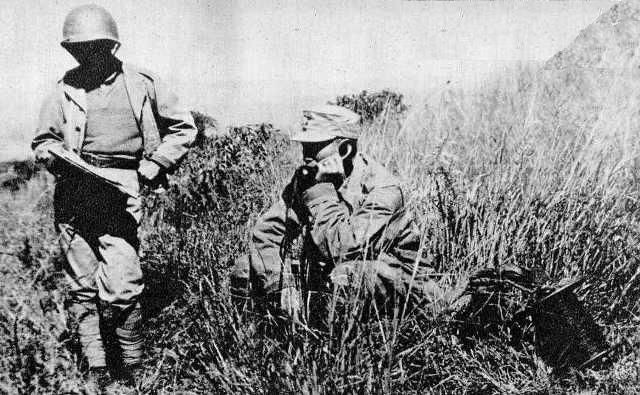 GENERAL SUN GIVING INSTRUCTIONS TO FRONT-LINE FORCES
GENERAL SUN GIVING INSTRUCTIONS TO FRONT-LINE FORCES
|
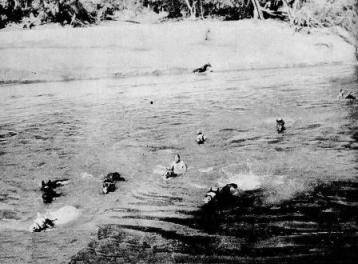 DETACHMENTS CROSSING THE SHWELI RIVER TO CONDUCT A FLANK ATTACK
DETACHMENTS CROSSING THE SHWELI RIVER TO CONDUCT A FLANK ATTACK
|
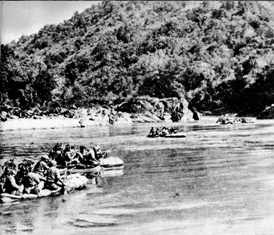 RUBBER BOATS FOR THE CROSSING
RUBBER BOATS FOR THE CROSSING
|
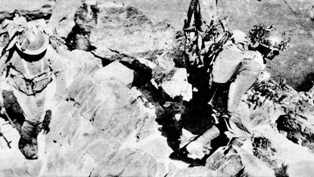 RIVER CROSSING WAS FOLLOWED BY MOUNTAIN CLIMBING
RIVER CROSSING WAS FOLLOWED BY MOUNTAIN CLIMBING
|
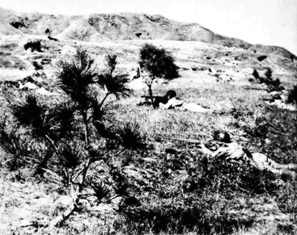 A SCENE IN THE NAMHKAM COMBAT
A SCENE IN THE NAMHKAM COMBAT
|
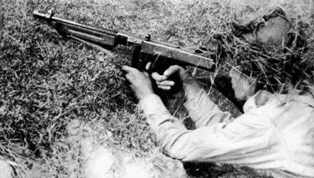 ANOTHER SCENE IN THE NAMHKAM COMBAT
ANOTHER SCENE IN THE NAMHKAM COMBAT
|
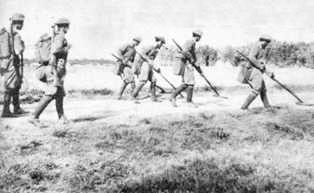 ENGINEER CORPS COMBING THE GROUND WITH MINESWEEPERS FOR POSSIBLE MINES LAID BY THE FLEEING ENEMY
ENGINEER CORPS COMBING THE GROUND WITH MINESWEEPERS FOR POSSIBLE MINES LAID BY THE FLEEING ENEMY
|
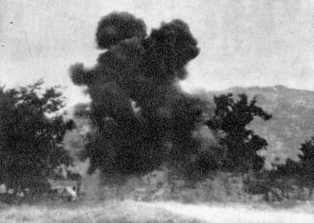 EXPLOSION OF A MINE LEFT BY THE ENEMY ON THE STREETS OF NAMHKAM
EXPLOSION OF A MINE LEFT BY THE ENEMY ON THE STREETS OF NAMHKAM
|
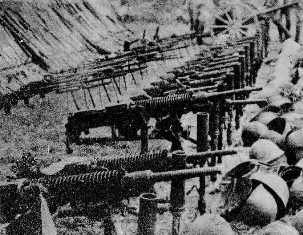 TROPHIES CAPTURED BY THE NEW 30TH DIVISION ADVANCING TOWARD NAMHKAM
TROPHIES CAPTURED BY THE NEW 30TH DIVISION ADVANCING TOWARD NAMHKAM
|
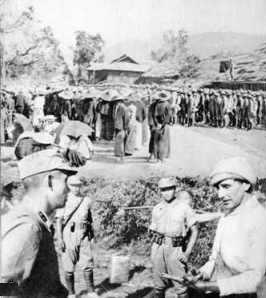 AT A MASS MEETING DELEGATES OF NAMHKAM POPULACE RELATING TO GENERAL SUN ATROCIOUS ACTS OF THE JAPANESE
AT A MASS MEETING DELEGATES OF NAMHKAM POPULACE RELATING TO GENERAL SUN ATROCIOUS ACTS OF THE JAPANESE
|
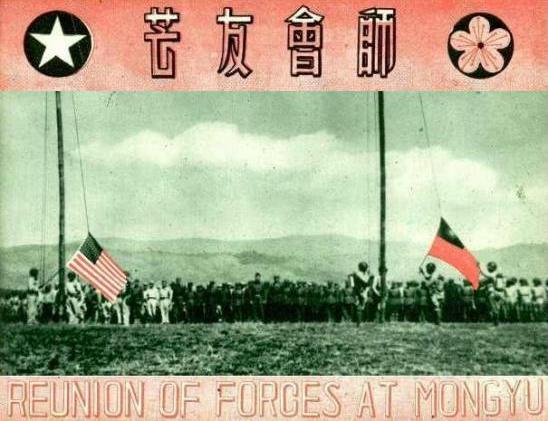 THE CHINESE ARMY IN INDIA AND CHINESE TROOPS FROM CHINA MET AT MONGYU
THE CHINESE ARMY IN INDIA AND CHINESE TROOPS FROM CHINA MET AT MONGYU
A CELEBRATION HELD AT WHICH U.S. AND CHINESE NATIONAL FLAGS WERE HOISTED UP
|
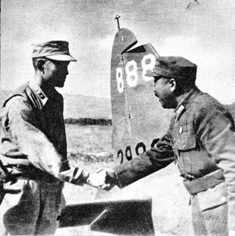 MUTUAL CONGRATULATIONS EXCHANGED BETWEEN GEN. WEI LIH-HUANG, COMMANDING GENERAL OF WEST YUNNAN WAR AREA AND GEN. SUN
MUTUAL CONGRATULATIONS EXCHANGED BETWEEN GEN. WEI LIH-HUANG, COMMANDING GENERAL OF WEST YUNNAN WAR AREA AND GEN. SUN
|
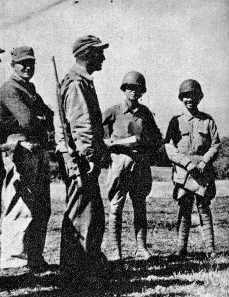 CONGRATULATIONS! LONG LIVE CHINA! LONG LIVE THE ALLIES!
CONGRATULATIONS! LONG LIVE CHINA! LONG LIVE THE ALLIES!
|
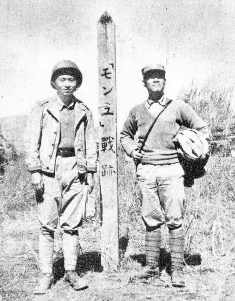 MONUMENT IN MONGYU ERECTED BY THE JAPANESE IN MEMORY OF THEIR OCCUPATION OF BURMA IN 1942
MONUMENT IN MONGYU ERECTED BY THE JAPANESE IN MEMORY OF THEIR OCCUPATION OF BURMA IN 1942
|
 REUNION OF THE SOLDIERS
REUNION OF THE SOLDIERS
|
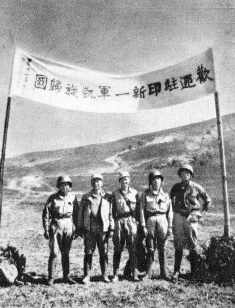 CHINESE EXPEDITIONARY FORCES WELCOMING THE TRIUMPHAL RETURN OF CHINESE ARMY IN INDIA-BURMA
CHINESE EXPEDITIONARY FORCES WELCOMING THE TRIUMPHAL RETURN OF CHINESE ARMY IN INDIA-BURMA
|
After the capture of Namhkam, the New 38th Division did not allow the enemy breathing space, and
continued to march rapidly on to Mongyu, the intersection point between the new India-China Road and the old
Burma Road. The point was captured on January 27, 1945, and the historic junction of the Chinese Army in India and
the Chinese Expeditionary Force from west Yunnan was effected.
The khaki-clad New First Army and the grey cotton-padded uniformed Expeditionary Force arrived at the
appointed meeting place early in the morning when the ceremony was witnessed by a number of ranking Chinese and American
generals. The Chinese National Flag and the Stars and Stripes were hoisted amidst the playing of the national anthems of
the two countries and a salvo of gun fire.
In an address on the occasion, General Wei Li-huang referred to the junction as the most important
achievement in Sino-American cooperation. The principal slogan of the day was "To Tokyo," and the junction at Mongyu
was celebrated as the prelude of the meeting of the Allies in Tokyo.
After the ceremony, the two forces parted company. The Expeditionary Force returned to China.
But the Chinese Army in India had not yet completed its duties - the safeguarding of the Stilwell Road.
The stalwart sons of the New First Army continued their march on Lashio.
 BULLDOZERS AT WORK ON ROAD CONSTRUCTION
BULLDOZERS AT WORK ON ROAD CONSTRUCTION
|
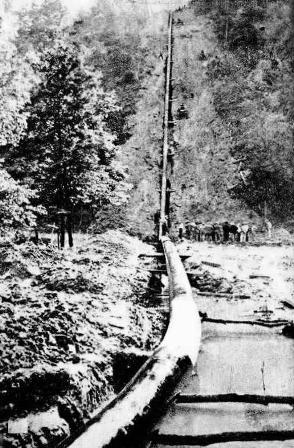 PIPELINE THROBBING PARALLEL TO STILWELL ROAD
PIPELINE THROBBING PARALLEL TO STILWELL ROAD
|
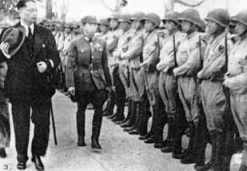 DR. T. V. SOONG, PRESIDENT OF THE EXECUTIVE YUAN, ADMINISTERED THE INAUGURATION OF BEHALF OF GENERALISSIMO CHIANG KAI-SHEK
DR. T. V. SOONG, PRESIDENT OF THE EXECUTIVE YUAN, ADMINISTERED THE INAUGURATION OF BEHALF OF GENERALISSIMO CHIANG KAI-SHEK
|
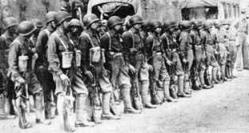 THE FIRST TRUCK CARAVAN OF SUPPLIES TO CHINA
THE FIRST TRUCK CARAVAN OF SUPPLIES TO CHINA
|
 THRONGS OF PEOPLE GATHERED AT THE CEREMONY
THRONGS OF PEOPLE GATHERED AT THE CEREMONY
|
With the junction of the Chinese armies at Mongyu, the India-China Road was cleared of the enemy. The road was officially opened and named
after General Stilwell by Generalissimo Chiang Kai-shek.
One hundred and five vehicles participated in the ceremony for the opening of the highway - the first
convoy traveling from India to China.
When the convoy passed through the Field Headquarters of the New First Army, General Sun Li-jen gave an
official reception at which the guests were offered Chinese and Australian food, American cigarettes, British matches,
and Indian liquor.
The official opening ceremony was held at Wanting, and presided over by President of the Executive Yuan
Dr. T. V. Soong.
The opening of the Stilwell Road was soon followed by the opening of the India-China pipeline. Trucks
using the highway sent supplies of arms for the improvement of the equipment of the Chinese fighting forces, while the
pipeline brought into China the fuel needed for the motive power of the China war theatre. A great stride was made
towards victory.
 ENTHUSIASTIC WELCOME FROM THE PEOPLE ALONG THE ROAD
ENTHUSIASTIC WELCOME FROM THE PEOPLE ALONG THE ROAD
|
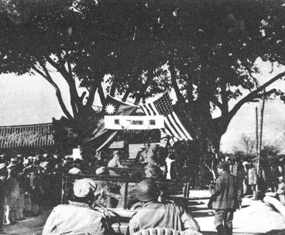 FIRST CARAVAN WELCOMED AT PAOSHAN
FIRST CARAVAN WELCOMED AT PAOSHAN
|
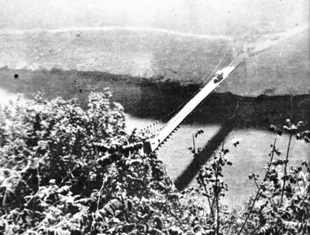 THE HUEITUNG BRIDGE ACROSS THE LU KIANG BETWEEN LUNG-LING AND PAOSHAN, YUNNAN
THE HUEITUNG BRIDGE ACROSS THE LU KIANG BETWEEN LUNG-LING AND PAOSHAN, YUNNAN
|
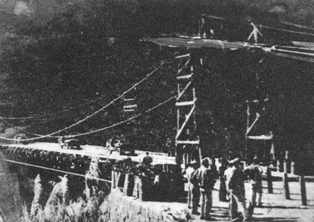 THE TRUCK CARAVAN PASSING THE BRIDGE
THE TRUCK CARAVAN PASSING THE BRIDGE
|
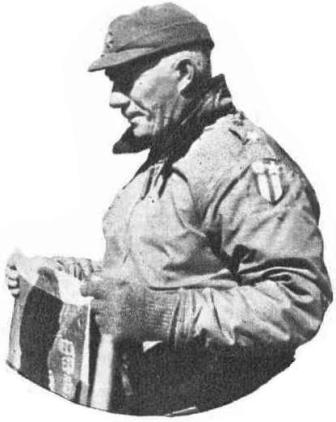 BRIG. GEN. PICK, COMMANDING GENERAL OF ENGINEER CORPS, U.S.A. WHO WAS RESPONSIBLE FOR THE CONSTRUCTION AND ITS
COMPLETION AND FOR WHOM THE ROAD WAS SUBSEQUENTLY DUBBED "PICK'S PIKE."
BRIG. GEN. PICK, COMMANDING GENERAL OF ENGINEER CORPS, U.S.A. WHO WAS RESPONSIBLE FOR THE CONSTRUCTION AND ITS
COMPLETION AND FOR WHOM THE ROAD WAS SUBSEQUENTLY DUBBED "PICK'S PIKE."
|
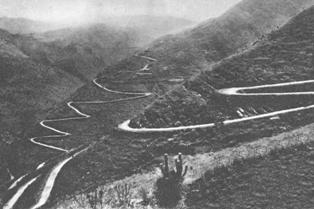 THE BURMA ROAD WHICH IS LINKED WITH STILWELL ROAD
THE BURMA ROAD WHICH IS LINKED WITH STILWELL ROAD
|
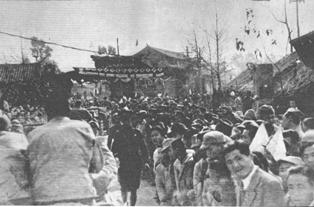 ARRIVAL OF THE FIRST CARAVAN IN KUNMING
ARRIVAL OF THE FIRST CARAVAN IN KUNMING
|
|
CAPTURE OF LASHIO AND HSIPAW
|
From Hsenwi to Lashio
While the enemy was cleared off from the Stilwell Road, he still maintained forces at Meng Yu and Namhakka.
The New 50th and New 38th Divisions therefore continued to clear these districts of remnant enemy units, and the
divisional commander of the enemy 56th Division barely escaped being taken prisoner in the engagement.
Hsenwi was captured by the New 30th Division on February 20, when the march on Lashio was launched.
The 30 odd miles separating Hsenwi and Lashio was very mountainous territory, and the progress was
necessarily slow but now with the arrival of armored car units our forces were reinforced.
The old town of Lashio fell on March 6, while the new section of the town fell three days later.
From Mwanhawm to Hsipaw
The capture of Lashio completed the mission of the New 38th and the New 50th Divisions, but the 50th
Division had still to effect the last act in the Burma campaign.
The 50th Division, after the Mogaung Valley campaign, was first charged with the task of affording
assistance to our British Allies (36th British Division) in their attack of Katha which was successfully accomplished.
The 50th Division then crossed the Irrawaddy to mop-up the remnant enemy units in that district. The battle for Mwanhawn
was the fiercest engagement in this connection, and the point was captured after a series of vogorous attacks.
The 50th Division carried on its victorious march southwards and by the middle of March captured
Hsipaw and on March 23 effected a junction with the New 38th Division on the Naphai Highway.
The area west of Hsipaw was virtually a British war zone but because of the swift advance of Chinese Army
the British were enabled to push immediately southwards to lower Burma, leaving the Chinese forces to capture the
important point of Kyaukme west of Hsipaw with which Chinese Army in India concluded its brilliant Burma campaign.
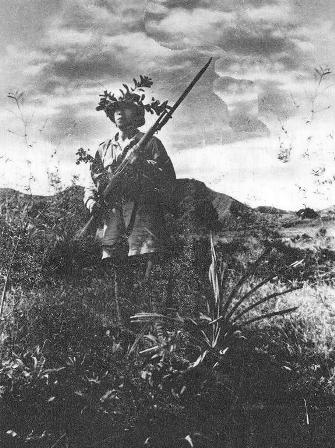 OUTPOST ON THE LASHIO FRONT
OUTPOST ON THE LASHIO FRONT
|
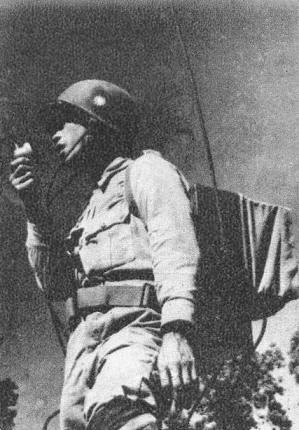 RADIOS WERE ALTERNATELY USED IN THE MOUNTAINOUS REGIONS OF LASHIO
RADIOS WERE ALTERNATELY USED IN THE MOUNTAINOUS REGIONS OF LASHIO
|
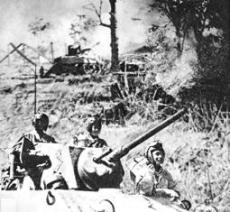
|
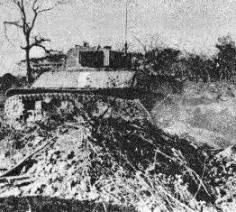
|

|
|
Joint Operation at Lashio
|
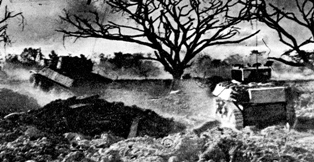
|
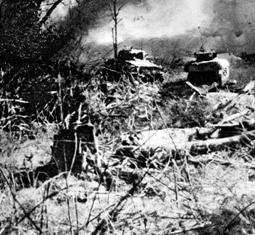
|
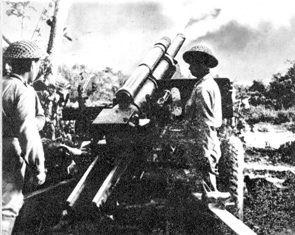 BOMBARDMENT OF HEAVY GUNS
BOMBARDMENT OF HEAVY GUNS
|
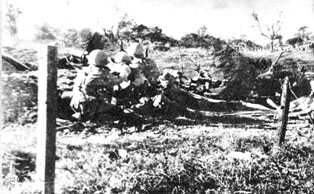 SMASHING OVER THE BARBED WIRE BARRICADES
SMASHING OVER THE BARBED WIRE BARRICADES
|
 SEA OF FLAMES
SEA OF FLAMES
|
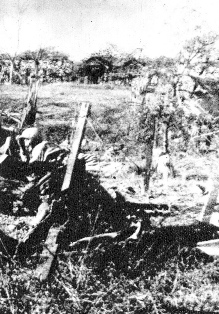 UNDER COVER
UNDER COVER
|
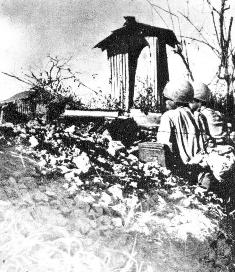 MACHINE-GUN FIRE
MACHINE-GUN FIRE
|
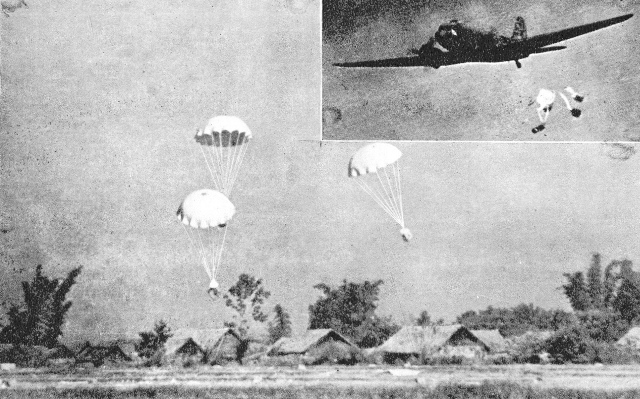 AMMUNITION SUPPLIED BY PARACHUTING TO THE FORCES HOLDING POSITIONS HIGH UP IN THE MOUNTAINS
AMMUNITION SUPPLIED BY PARACHUTING TO THE FORCES HOLDING POSITIONS HIGH UP IN THE MOUNTAINS
|
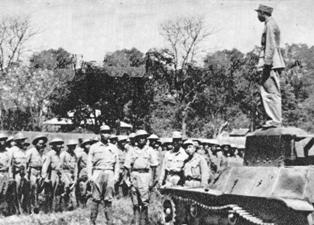 MAJ. GEN. PAN YU-KUN, COMMANDER OF 50TH DIVISION, GIVING A CRITIQUE ON THE TACTICS OF THE BATTLE OF HSIPAW
MAJ. GEN. PAN YU-KUN, COMMANDER OF 50TH DIVISION, GIVING A CRITIQUE ON THE TACTICS OF THE BATTLE OF HSIPAW
|
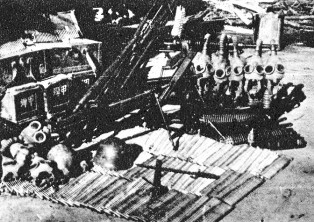 TROPHIES CAPTURED BY 50TH DIVISION
TROPHIES CAPTURED BY 50TH DIVISION
|
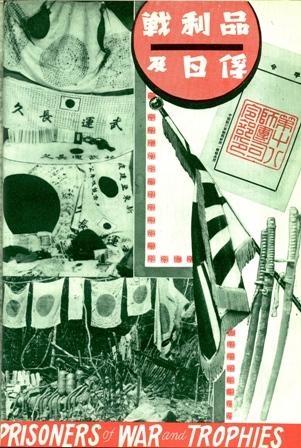
|
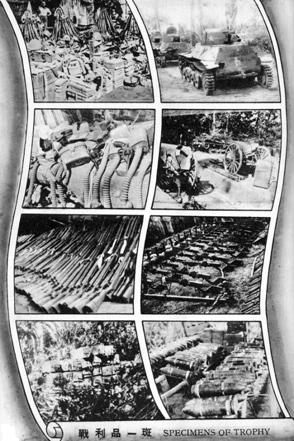
|
Trophies
No less than six Japanese Divisions were routed by the New First Army in Burma, the casualties amounting
to 100,000, with 323 taken prisoner. Trophies captured by the New First Army included 7,938 rifles, 643 machine guns,
186 cannons, 553 motor vehicles, 453 locomotives and wagons, 67 tanks, 5 planes, 108 warehouses and more than
20,000 tons of metals.
Prisoners of War
It must be admitted that the Japanese soldier was fully imbibed with the spirit of sacrifice, which
was especially demonstrated in the Saipan and Iwo Jima engagements in the Pacific where the Japanese willingly died
rather than surrender. Accordingly, in the wide stretched battlefield of Burma where more than 2,000 engagements took
place, only 300 odd prisoners were taken, amounting to 0.3 percent of the number of their casualties. However, a low
ebb in Japanese morale was noticeable with his defeat at Yupong Ga, where the Japanese militarist hold on the rank and file began to lose his grip.
The best treatment possible was accorded the Japanese war prisoners who were subjected only to restrictions in their movements but received
all the medical attention they needed. The stubbornness of these prisoners were soon won over and they were made to realize their folly in playing into the
hands of their ambitious military aggressors.
The prisoners taken in Burma were ultimately transferred to internment camps kept by the Allied Command
at New Delhi.
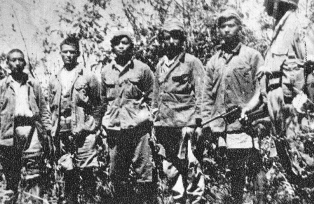
|
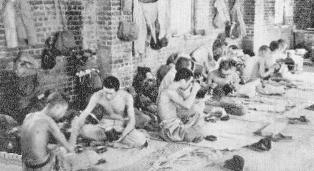
|
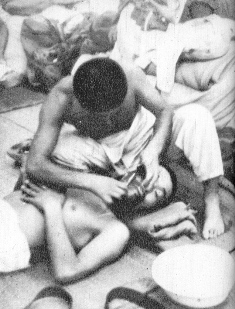
|
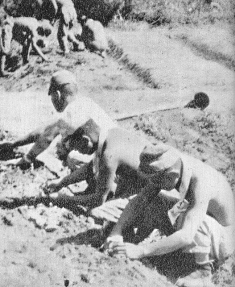
|
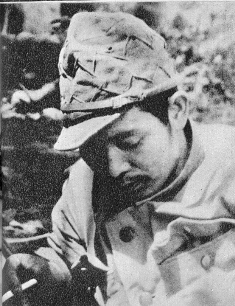
|
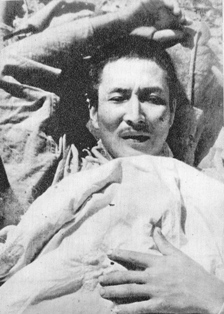
|
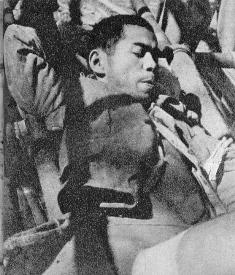
|
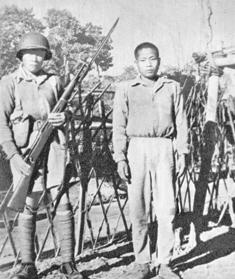
|
Culture in Army Life
In addition to military training, spiritual training was given the Chinese Army.
During the training at Ramgarh, a campaign against illiteracy among the enlisted men was carried out.
When the men were sent into actual battle, their cultural life was not neglected. Newspapers were
issued among various units.
Dramatic entertainment was also successfully carried on to benefit the men. Performances were often
staged by their own members even during the progress of fighting. Motion picture squads were later also introduced
as an additional recreation.
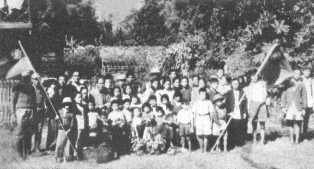 THE CHORUS ORGANIZED BY THE PD OF THE NEW 38TH DIVISION, ITS MEMBERS CONSISTING OF CHINESE RESIDENTS IN BHAMO WITH
AGES RANGING FROM 6 TO 40.
THE CHORUS ORGANIZED BY THE PD OF THE NEW 38TH DIVISION, ITS MEMBERS CONSISTING OF CHINESE RESIDENTS IN BHAMO WITH
AGES RANGING FROM 6 TO 40.
|
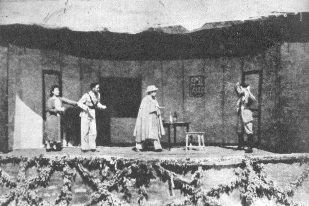 DRAMATIC TROOPS ATTACHED TO THE NEW 38TH DIVISION STAGING A PERFORMANCE
DRAMATIC TROOPS ATTACHED TO THE NEW 38TH DIVISION STAGING A PERFORMANCE
|
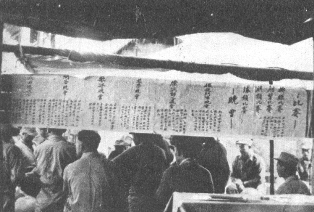 PUBLIC ENTERTAINMENT SPONSORED BY NEW FIRST ARMY FOR ITS OFFICERS AND MEN
PUBLIC ENTERTAINMENT SPONSORED BY NEW FIRST ARMY FOR ITS OFFICERS AND MEN
|
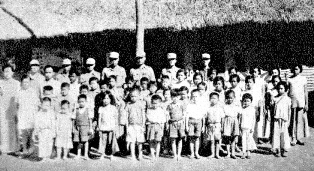 THE CHINESE SCHOOL IN MYITKYINA SPONSORED BY THE NEW FIRST ARMY
THE CHINESE SCHOOL IN MYITKYINA SPONSORED BY THE NEW FIRST ARMY
|
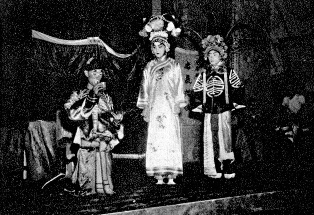 FOR THE CONSOLATION AND ENTERTAINMENT OF THE RANK AND FILE WHO TOOK PART IN THE OCCUPATION OF BHAMO, THE ARMY
OPERATIC TROUPE WENT ON STAGE FOR TWELVE CONSECUTIVE DAYS
FOR THE CONSOLATION AND ENTERTAINMENT OF THE RANK AND FILE WHO TOOK PART IN THE OCCUPATION OF BHAMO, THE ARMY
OPERATIC TROUPE WENT ON STAGE FOR TWELVE CONSECUTIVE DAYS
|
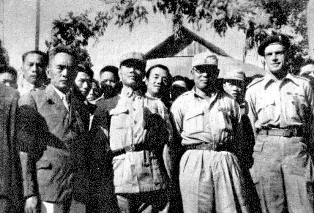 THE INAUGURATION OF THE CHINESE SCHOOL IN BHAMO
THE INAUGURATION OF THE CHINESE SCHOOL IN BHAMO
|
Public Relations with People
The Army also undertook work in establishing good relations with the population in the war zones - a measure
which proved most effective in promoting cooperation between the Army and the people.
Special Service workers of the Army visited villages to bring succour to the population suffering from
the Japanese invaders. Their sympathy was soon won and they cooperated in various measures to the progress of the
military operations.
The Army also took time to pay attention to the improvement of the large numbers of overseas Chinese
communities in Burma. In this interaction, General Sun Li-jen was personally interested in various schemes for the
betterment of the lot of the Chinese residents.
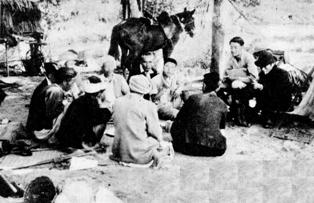 PD WORKERS MAKING CALLS AT RURAL PLACES
PD WORKERS MAKING CALLS AT RURAL PLACES
|
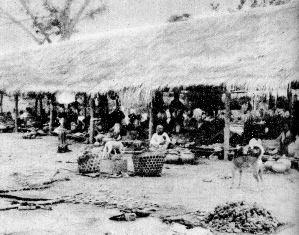 THE TEMPORARY BAZAAR BUILT BY BHAMO PEOPLE AT THE INITIATIONS OF THE PD WORKERS
THE TEMPORARY BAZAAR BUILT BY BHAMO PEOPLE AT THE INITIATIONS OF THE PD WORKERS
|
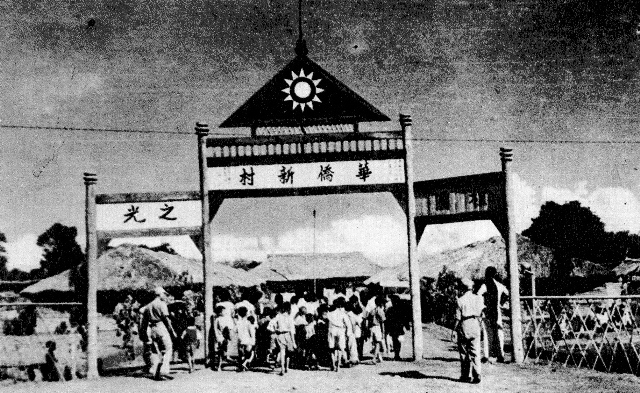 THE CHINESE TROOPS REHABILITATED A VILLAGE FOR THE OVERSEAS CHINESE RESIDENTS IN MYITKYINA WHO HAVE BEEN RENDERED
HOMELESS DURING THE FIGHTING
THE CHINESE TROOPS REHABILITATED A VILLAGE FOR THE OVERSEAS CHINESE RESIDENTS IN MYITKYINA WHO HAVE BEEN RENDERED
HOMELESS DURING THE FIGHTING
|

|
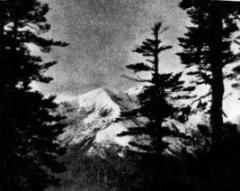
|
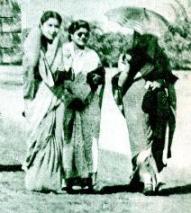
|
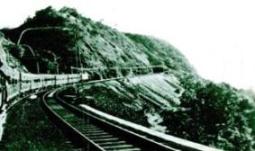
|
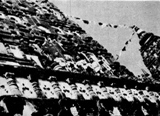
|
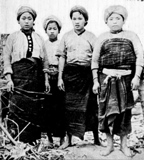
|
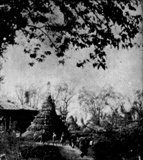
|

|

|
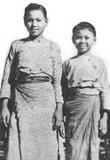
|
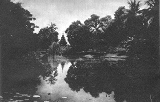
|

|
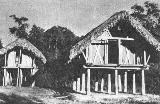
|
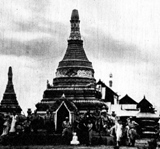
|
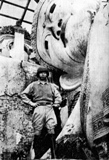
|
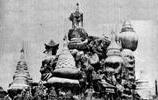
|
After the victorious conclusion of the Burma campaign, the New First Army was assembled at Myitkyina
to await orders for its triumphant return.
Towards the end of June, 1945, our Allied Air Force placed more than 30 air transports of the C-46 and
C-47 models for the transportation of the New First Army back to China. The general counter-offensive in the China Theatre
was to be launched, and the New First Army was to take up the task of the offensive against the enemy on the Liuchow
Peninsula, to coordinate with the operations of our Allies in the Pacific.
While the New First Army was marching towards its new destination from Nanning in August, 1945, the Japanese
announced their unconditional surrender. The Army was then commissioned with the new task of accepting the enemy's surrender
in the Canton area.
The Causes of Victory
The brilliant victories scored in Burma by the Chinese Army in India were neither accidental nor sheer
luck. The general conception that the success was chiefly due to the efforts of our Allies was also exaggerated. Of
course, air support, efficient supply lines, and excellent first aid service by our Allies contributed much to the
outcome, but the main source of success lay in the hardy fight put up by our own men.
High morale and capacity for endurance marked the principal characteristics of the C.A.I. The
operations carried out over difficult terrain in northern Burma were further complicated by the roundabout movements
which were employed on more than one occasion to surprise the enemy. The stamina and ability for physical endurance
displayed by the Chinese troops made a great impression on the United States Medical Corps, and even on the enemy who
prided his bushido.
Superior strategy and efficient command also marked the Burma campaign where the Chinese Army usually
took the initiative in the engagements.
The intensive training received by the C.A.I., which was continued even during the campaign when no
actual fighting took place, was another factor which ensured victory.
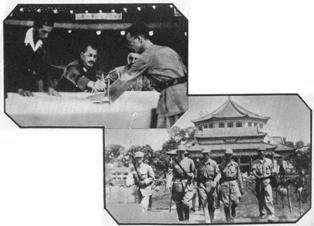 TOP: THE LOCAL COMMANDER OF THE JAPANESE FORCES SIGNED THE INSTRUMENT OF SURRENDER.
BOTTOM: GENERAL SUN COMING OUT OF SUN YAT-SEN MEMORIAL WHERE THE SURRENDER WAS JUST SIGNED.
TOP: THE LOCAL COMMANDER OF THE JAPANESE FORCES SIGNED THE INSTRUMENT OF SURRENDER.
BOTTOM: GENERAL SUN COMING OUT OF SUN YAT-SEN MEMORIAL WHERE THE SURRENDER WAS JUST SIGNED.
|
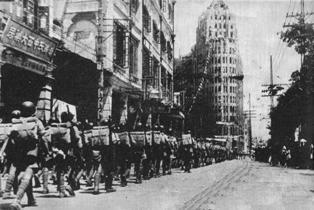 THE NEW FIRST ARMY WAS DISPATCHED TO CANTON TO ACCEPT THE SURRENDER OF THE JAPANESE FORCES IN SOUTH CHINA
THE NEW FIRST ARMY WAS DISPATCHED TO CANTON TO ACCEPT THE SURRENDER OF THE JAPANESE FORCES IN SOUTH CHINA
|
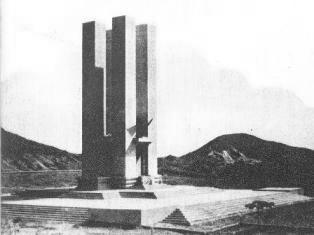 THE NEW FIRST ARMY SELECTED A 119-ACRE AREA ON THE WHITE CLOUD HILL NEAR CANTON TO ERECT ITS TOMB FOR THE FALLEN.
ABOVE: THE MEMORIAL TABLET STANDING ERECT AT THE CENTER OF TOMB.
RIGHT: INSCIRTION ON THE MEMORIAL TABLET.
BELOW: JAPANESE PRISONERS AT WORK ON THE TOMB.
BOTTOM: OTHER JAPANESE PRISONERS BEING SENT TO CONCENTRATION CAMPS.
THE NEW FIRST ARMY SELECTED A 119-ACRE AREA ON THE WHITE CLOUD HILL NEAR CANTON TO ERECT ITS TOMB FOR THE FALLEN.
ABOVE: THE MEMORIAL TABLET STANDING ERECT AT THE CENTER OF TOMB.
RIGHT: INSCIRTION ON THE MEMORIAL TABLET.
BELOW: JAPANESE PRISONERS AT WORK ON THE TOMB.
BOTTOM: OTHER JAPANESE PRISONERS BEING SENT TO CONCENTRATION CAMPS.
|

CHINESE ARMY
INDIA-BURMA
CAMPAIGN
TOP OF PAGE
BATTLE MAPS
GENERAL SUN VISITS ETO
|
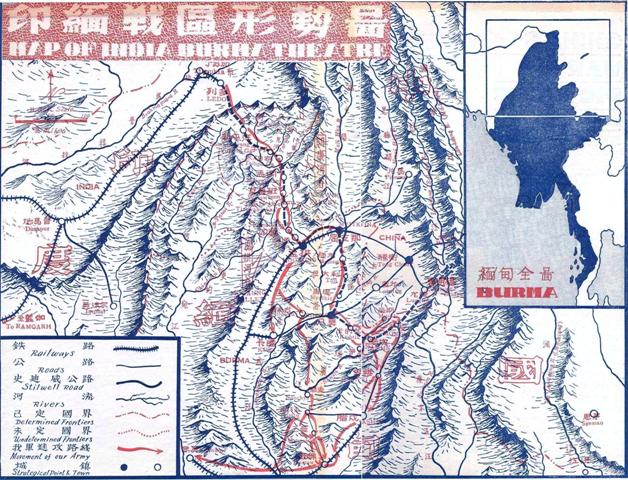

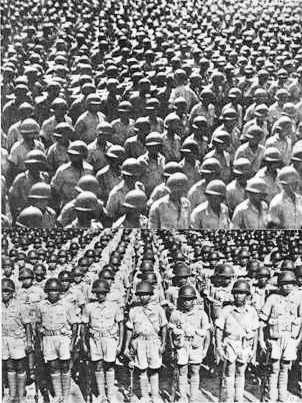
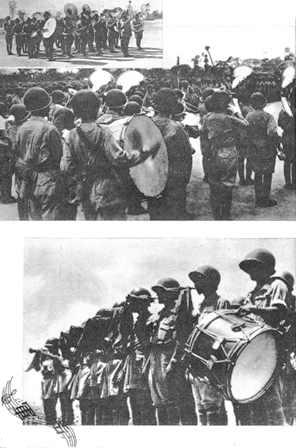
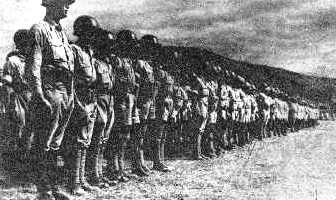
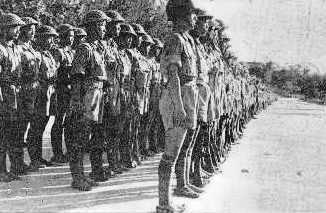
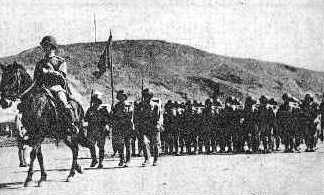
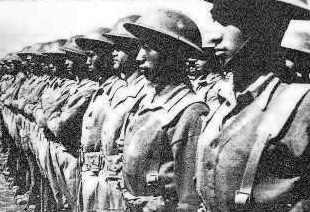
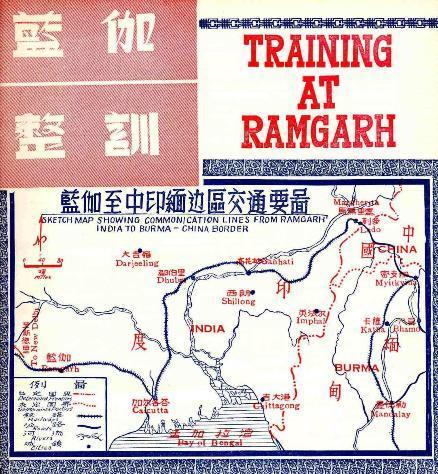













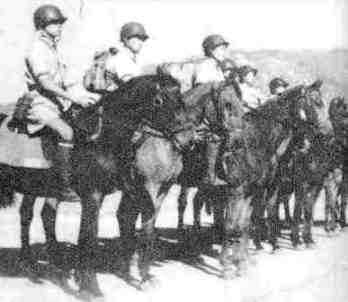
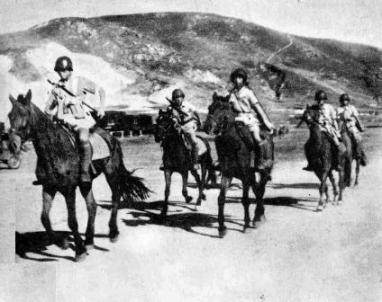
 GENERAL HO YING-CHING TESTING THE SUSPENSION BRIDGE CONSTRUCTED BY THE ENGINEER CORPS.
GENERAL HO YING-CHING TESTING THE SUSPENSION BRIDGE CONSTRUCTED BY THE ENGINEER CORPS.
 GENERAL HO ON INSPECTION OF MANEUVERS, ACCOMPANIED BY LT. GEN. SUN (LEFT), LT. GEN. LIAO YAO-HSIANG (SECOND TO LEFT)
AND MAJ. GEN. TANG SHOU-CHIH (EXTREME RIGHT).
GENERAL HO ON INSPECTION OF MANEUVERS, ACCOMPANIED BY LT. GEN. SUN (LEFT), LT. GEN. LIAO YAO-HSIANG (SECOND TO LEFT)
AND MAJ. GEN. TANG SHOU-CHIH (EXTREME RIGHT).
 THRUSTING FORWARD WITH BAYONETS AND TOMMY GUNS APPROACHING AN OBJECT
THRUSTING FORWARD WITH BAYONETS AND TOMMY GUNS APPROACHING AN OBJECT

 GENERAL HO CONFERRING A MEDAL OF AWARD TO MACHINE-GUNNER PVT. WANG CHING, WHO DID A BRILLIANT PART IN THE MANEUVER
BY HOLDING TO HIS POSITION FIRING.
GENERAL HO CONFERRING A MEDAL OF AWARD TO MACHINE-GUNNER PVT. WANG CHING, WHO DID A BRILLIANT PART IN THE MANEUVER
BY HOLDING TO HIS POSITION FIRING.
 OVER ONE THOUSAND HOLES BORNE ON THE SCORES OF DUMMIES INDICATING THE EFFICIENCY OF FIRING
OVER ONE THOUSAND HOLES BORNE ON THE SCORES OF DUMMIES INDICATING THE EFFICIENCY OF FIRING











 SWINGING POLE CLIMBING - A NECESSARY TECHNIQUE IN JUNGLE WARFARE
SWINGING POLE CLIMBING - A NECESSARY TECHNIQUE IN JUNGLE WARFARE


 DOGS TRAINED FOR MILITARY INTELLIGENCE
DOGS TRAINED FOR MILITARY INTELLIGENCE



 (1) LEVER DRILL (SINGLE) (TOP LEFT BACKGROUND)
(2) RELAY RACE (INSET TOP LEFT)
(3) HIGH JUMP (INSET BOTTOM LEFT)
(4) WOODEN-HORSE HIKING
(5) BARRICADE JUMPING
(6) BOXING
(7) BROAD JUMP
(8) LEVER DRILL (DOUBLE) (BOTTOM RIGHT BACKGROUND)
(1) LEVER DRILL (SINGLE) (TOP LEFT BACKGROUND)
(2) RELAY RACE (INSET TOP LEFT)
(3) HIGH JUMP (INSET BOTTOM LEFT)
(4) WOODEN-HORSE HIKING
(5) BARRICADE JUMPING
(6) BOXING
(7) BROAD JUMP
(8) LEVER DRILL (DOUBLE) (BOTTOM RIGHT BACKGROUND)



 BIRDS-EYE VIEW OF JUNGLE MOUNTAINS
BIRDS-EYE VIEW OF JUNGLE MOUNTAINS









 MOUNTAIN GUN ARTILLERY TO THE FRONT
MOUNTAIN GUN ARTILLERY TO THE FRONT





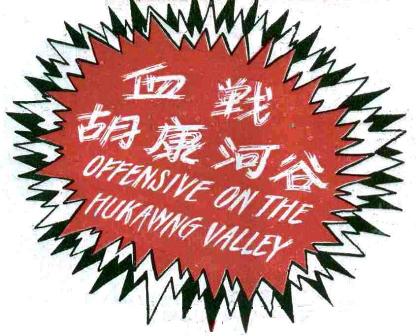
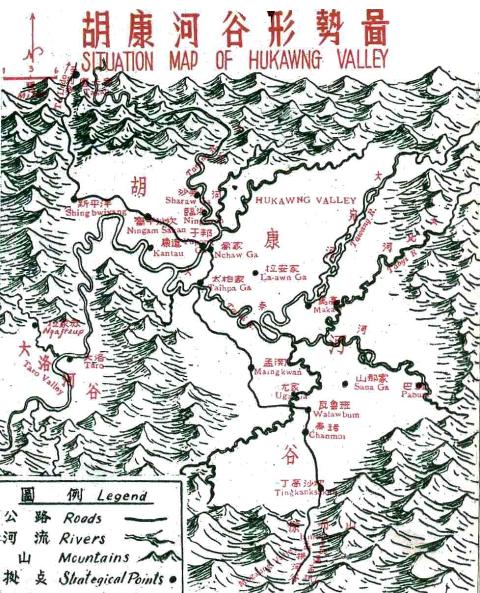



 TREE TRUNK TUNED INTO STRONGHOLD BY DEFENSE FORCE AT YUPONG GA AGAINST THE ENEMY ADVANCE
TREE TRUNK TUNED INTO STRONGHOLD BY DEFENSE FORCE AT YUPONG GA AGAINST THE ENEMY ADVANCE




















 AT THE CAPTURE OF TAIPHA GA BY THE NEW FIRST ARMY, A U.S. INFANTRY REGIMENT ARRIVED AT THE HUKAWNG VALLEY, IN
JOINT OPERATION WITH THEIR CHINESE ALLIES.
AT THE CAPTURE OF TAIPHA GA BY THE NEW FIRST ARMY, A U.S. INFANTRY REGIMENT ARRIVED AT THE HUKAWNG VALLEY, IN
JOINT OPERATION WITH THEIR CHINESE ALLIES.
 FORCES OF THE NEW 22ND DIVISION WHICH STARTED FROM LEDO IN THE EARLY SPRING OF 1944 CAPTURED SEVERAL STRATEGIC
POINTS ON THEIR WAY TO INVADE MAINGKWAN
FORCES OF THE NEW 22ND DIVISION WHICH STARTED FROM LEDO IN THE EARLY SPRING OF 1944 CAPTURED SEVERAL STRATEGIC
POINTS ON THEIR WAY TO INVADE MAINGKWAN




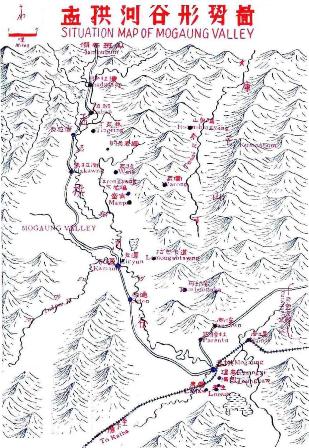



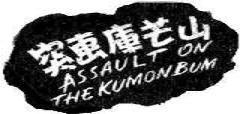
 PLANS WERE MADE TO LAUNCH A SURPRISE ATTACK ON KAMAING AFTER GENERAL STILWELL AND GENERAL SUN MADE AN INSPECTION
TOUR TO THE FRONT AND STUDIED THE SITUATION
PLANS WERE MADE TO LAUNCH A SURPRISE ATTACK ON KAMAING AFTER GENERAL STILWELL AND GENERAL SUN MADE AN INSPECTION
TOUR TO THE FRONT AND STUDIED THE SITUATION





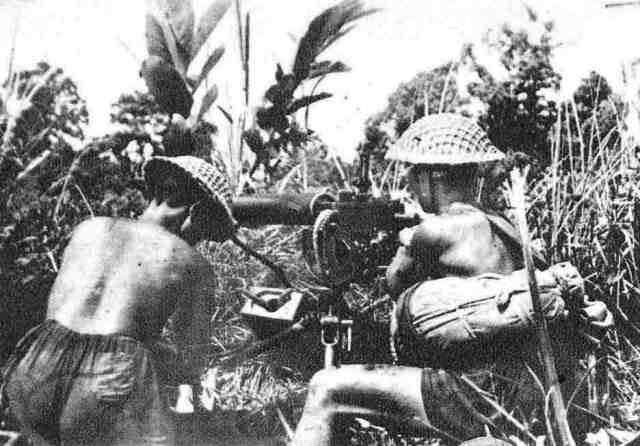

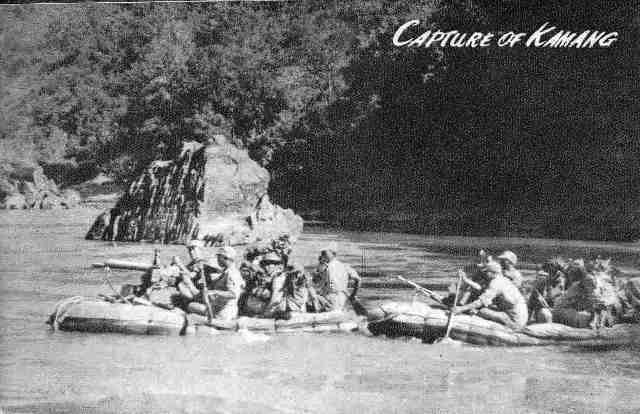


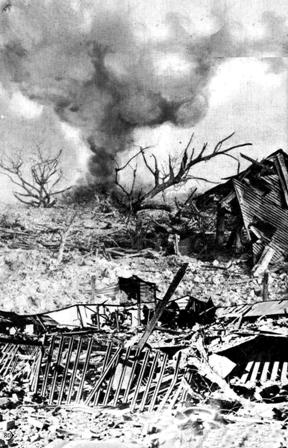






 MISS FANG YEN, TYPICAL OF THE CHINESE NURSES ACTIVE ON THE NORTH BURMA FRONT.
MISS FANG YEN, TYPICAL OF THE CHINESE NURSES ACTIVE ON THE NORTH BURMA FRONT.
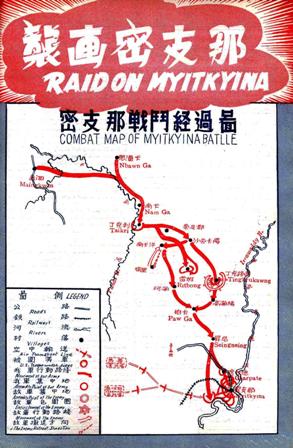
 TOP TO BOTTOM: KITCHEN CORPS
TOP TO BOTTOM: KITCHEN CORPS ARMY TRANSPORTS AND GLIDERS CONSOLIDATE THE OCCUPATION
ARMY TRANSPORTS AND GLIDERS CONSOLIDATE THE OCCUPATION
 THE ARTILLERY CONSTRUCTING GUN POSITIONS
THE ARTILLERY CONSTRUCTING GUN POSITIONS
 GLIDERS LED BY TRANSPORT PLANES DIRECTED TOWARDS MYITKYINA
GLIDERS LED BY TRANSPORT PLANES DIRECTED TOWARDS MYITKYINA



 THE CHINESE NATIONAL HOLIDAY (OCTOBER 10) WAS CELEBRATED BY THE NEW FIRST ARMY IN MYITKYINA WITH A MILITARY PARADE
THE CHINESE NATIONAL HOLIDAY (OCTOBER 10) WAS CELEBRATED BY THE NEW FIRST ARMY IN MYITKYINA WITH A MILITARY PARADE
 GENERAL SUN CONDUCTED AN INSPECTION OF THE MOTORIZED FORCES IN MYITKYINA
GENERAL SUN CONDUCTED AN INSPECTION OF THE MOTORIZED FORCES IN MYITKYINA







 ADVANCE GUARDS ON THE MOVE
ADVANCE GUARDS ON THE MOVE








 GENERAL SUN AT THE NAMHKAM FRONT, ACCOMPANIED BY MAJ. GEN. SHIH-YUEH, HIS CHIEF OF STAFF.
GENERAL SUN AT THE NAMHKAM FRONT, ACCOMPANIED BY MAJ. GEN. SHIH-YUEH, HIS CHIEF OF STAFF.
 MAJ. GEN. TANG SHOU-CHIH, COMMANDER OF THE NEW 30TH DIVISION, REPORTING TO GEN. SUN ON THE COMBAT SITUATION
MAJ. GEN. TANG SHOU-CHIH, COMMANDER OF THE NEW 30TH DIVISION, REPORTING TO GEN. SUN ON THE COMBAT SITUATION

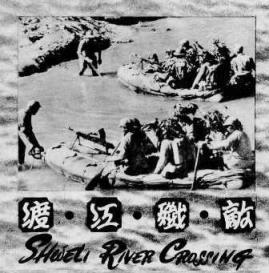
 DETACHMENTS CROSSING THE SHWELI RIVER TO CONDUCT A FLANK ATTACK
DETACHMENTS CROSSING THE SHWELI RIVER TO CONDUCT A FLANK ATTACK




 ENGINEER CORPS COMBING THE GROUND WITH MINESWEEPERS FOR POSSIBLE MINES LAID BY THE FLEEING ENEMY
ENGINEER CORPS COMBING THE GROUND WITH MINESWEEPERS FOR POSSIBLE MINES LAID BY THE FLEEING ENEMY

 TROPHIES CAPTURED BY THE NEW 30TH DIVISION ADVANCING TOWARD NAMHKAM
TROPHIES CAPTURED BY THE NEW 30TH DIVISION ADVANCING TOWARD NAMHKAM
 AT A MASS MEETING DELEGATES OF NAMHKAM POPULACE RELATING TO GENERAL SUN ATROCIOUS ACTS OF THE JAPANESE
AT A MASS MEETING DELEGATES OF NAMHKAM POPULACE RELATING TO GENERAL SUN ATROCIOUS ACTS OF THE JAPANESE

 MUTUAL CONGRATULATIONS EXCHANGED BETWEEN GEN. WEI LIH-HUANG, COMMANDING GENERAL OF WEST YUNNAN WAR AREA AND GEN. SUN
MUTUAL CONGRATULATIONS EXCHANGED BETWEEN GEN. WEI LIH-HUANG, COMMANDING GENERAL OF WEST YUNNAN WAR AREA AND GEN. SUN
 CONGRATULATIONS! LONG LIVE CHINA! LONG LIVE THE ALLIES!
CONGRATULATIONS! LONG LIVE CHINA! LONG LIVE THE ALLIES!
 MONUMENT IN MONGYU ERECTED BY THE JAPANESE IN MEMORY OF THEIR OCCUPATION OF BURMA IN 1942
MONUMENT IN MONGYU ERECTED BY THE JAPANESE IN MEMORY OF THEIR OCCUPATION OF BURMA IN 1942
 REUNION OF THE SOLDIERS
REUNION OF THE SOLDIERS
 CHINESE EXPEDITIONARY FORCES WELCOMING THE TRIUMPHAL RETURN OF CHINESE ARMY IN INDIA-BURMA
CHINESE EXPEDITIONARY FORCES WELCOMING THE TRIUMPHAL RETURN OF CHINESE ARMY IN INDIA-BURMA

 BULLDOZERS AT WORK ON ROAD CONSTRUCTION
BULLDOZERS AT WORK ON ROAD CONSTRUCTION
 PIPELINE THROBBING PARALLEL TO STILWELL ROAD
PIPELINE THROBBING PARALLEL TO STILWELL ROAD
 DR. T. V. SOONG, PRESIDENT OF THE EXECUTIVE YUAN, ADMINISTERED THE INAUGURATION OF BEHALF OF GENERALISSIMO CHIANG KAI-SHEK
DR. T. V. SOONG, PRESIDENT OF THE EXECUTIVE YUAN, ADMINISTERED THE INAUGURATION OF BEHALF OF GENERALISSIMO CHIANG KAI-SHEK


 ENTHUSIASTIC WELCOME FROM THE PEOPLE ALONG THE ROAD
ENTHUSIASTIC WELCOME FROM THE PEOPLE ALONG THE ROAD
 FIRST CARAVAN WELCOMED AT PAOSHAN
FIRST CARAVAN WELCOMED AT PAOSHAN
 THE HUEITUNG BRIDGE ACROSS THE LU KIANG BETWEEN LUNG-LING AND PAOSHAN, YUNNAN
THE HUEITUNG BRIDGE ACROSS THE LU KIANG BETWEEN LUNG-LING AND PAOSHAN, YUNNAN
 THE TRUCK CARAVAN PASSING THE BRIDGE
THE TRUCK CARAVAN PASSING THE BRIDGE
 BRIG. GEN. PICK, COMMANDING GENERAL OF ENGINEER CORPS, U.S.A. WHO WAS RESPONSIBLE FOR THE CONSTRUCTION AND ITS
COMPLETION AND FOR WHOM THE ROAD WAS SUBSEQUENTLY DUBBED "PICK'S PIKE."
BRIG. GEN. PICK, COMMANDING GENERAL OF ENGINEER CORPS, U.S.A. WHO WAS RESPONSIBLE FOR THE CONSTRUCTION AND ITS
COMPLETION AND FOR WHOM THE ROAD WAS SUBSEQUENTLY DUBBED "PICK'S PIKE."















 MAJ. GEN. PAN YU-KUN, COMMANDER OF 50TH DIVISION, GIVING A CRITIQUE ON THE TACTICS OF THE BATTLE OF HSIPAW
MAJ. GEN. PAN YU-KUN, COMMANDER OF 50TH DIVISION, GIVING A CRITIQUE ON THE TACTICS OF THE BATTLE OF HSIPAW












 THE CHORUS ORGANIZED BY THE PD OF THE NEW 38TH DIVISION, ITS MEMBERS CONSISTING OF CHINESE RESIDENTS IN BHAMO WITH
AGES RANGING FROM 6 TO 40.
THE CHORUS ORGANIZED BY THE PD OF THE NEW 38TH DIVISION, ITS MEMBERS CONSISTING OF CHINESE RESIDENTS IN BHAMO WITH
AGES RANGING FROM 6 TO 40.
 DRAMATIC TROOPS ATTACHED TO THE NEW 38TH DIVISION STAGING A PERFORMANCE
DRAMATIC TROOPS ATTACHED TO THE NEW 38TH DIVISION STAGING A PERFORMANCE
 PUBLIC ENTERTAINMENT SPONSORED BY NEW FIRST ARMY FOR ITS OFFICERS AND MEN
PUBLIC ENTERTAINMENT SPONSORED BY NEW FIRST ARMY FOR ITS OFFICERS AND MEN
 THE CHINESE SCHOOL IN MYITKYINA SPONSORED BY THE NEW FIRST ARMY
THE CHINESE SCHOOL IN MYITKYINA SPONSORED BY THE NEW FIRST ARMY
 FOR THE CONSOLATION AND ENTERTAINMENT OF THE RANK AND FILE WHO TOOK PART IN THE OCCUPATION OF BHAMO, THE ARMY
OPERATIC TROUPE WENT ON STAGE FOR TWELVE CONSECUTIVE DAYS
FOR THE CONSOLATION AND ENTERTAINMENT OF THE RANK AND FILE WHO TOOK PART IN THE OCCUPATION OF BHAMO, THE ARMY
OPERATIC TROUPE WENT ON STAGE FOR TWELVE CONSECUTIVE DAYS
 THE INAUGURATION OF THE CHINESE SCHOOL IN BHAMO
THE INAUGURATION OF THE CHINESE SCHOOL IN BHAMO
 PD WORKERS MAKING CALLS AT RURAL PLACES
PD WORKERS MAKING CALLS AT RURAL PLACES
 THE TEMPORARY BAZAAR BUILT BY BHAMO PEOPLE AT THE INITIATIONS OF THE PD WORKERS
THE TEMPORARY BAZAAR BUILT BY BHAMO PEOPLE AT THE INITIATIONS OF THE PD WORKERS
 THE CHINESE TROOPS REHABILITATED A VILLAGE FOR THE OVERSEAS CHINESE RESIDENTS IN MYITKYINA WHO HAVE BEEN RENDERED
HOMELESS DURING THE FIGHTING
THE CHINESE TROOPS REHABILITATED A VILLAGE FOR THE OVERSEAS CHINESE RESIDENTS IN MYITKYINA WHO HAVE BEEN RENDERED
HOMELESS DURING THE FIGHTING
















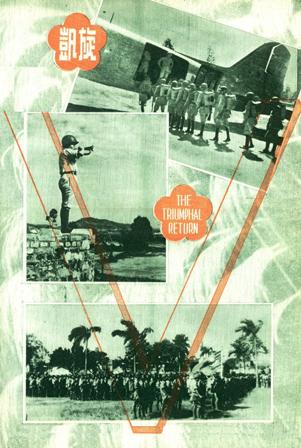
 TOP: THE LOCAL COMMANDER OF THE JAPANESE FORCES SIGNED THE INSTRUMENT OF SURRENDER.
BOTTOM: GENERAL SUN COMING OUT OF SUN YAT-SEN MEMORIAL WHERE THE SURRENDER WAS JUST SIGNED.
TOP: THE LOCAL COMMANDER OF THE JAPANESE FORCES SIGNED THE INSTRUMENT OF SURRENDER.
BOTTOM: GENERAL SUN COMING OUT OF SUN YAT-SEN MEMORIAL WHERE THE SURRENDER WAS JUST SIGNED.
 THE NEW FIRST ARMY WAS DISPATCHED TO CANTON TO ACCEPT THE SURRENDER OF THE JAPANESE FORCES IN SOUTH CHINA
THE NEW FIRST ARMY WAS DISPATCHED TO CANTON TO ACCEPT THE SURRENDER OF THE JAPANESE FORCES IN SOUTH CHINA
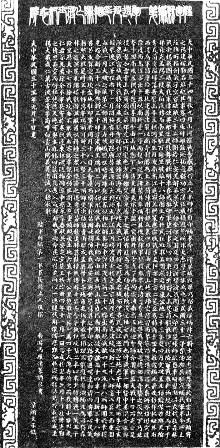
 THE NEW FIRST ARMY SELECTED A 119-ACRE AREA ON THE WHITE CLOUD HILL NEAR CANTON TO ERECT ITS TOMB FOR THE FALLEN.
ABOVE: THE MEMORIAL TABLET STANDING ERECT AT THE CENTER OF TOMB.
RIGHT: INSCIRTION ON THE MEMORIAL TABLET.
BELOW: JAPANESE PRISONERS AT WORK ON THE TOMB.
BOTTOM: OTHER JAPANESE PRISONERS BEING SENT TO CONCENTRATION CAMPS.
THE NEW FIRST ARMY SELECTED A 119-ACRE AREA ON THE WHITE CLOUD HILL NEAR CANTON TO ERECT ITS TOMB FOR THE FALLEN.
ABOVE: THE MEMORIAL TABLET STANDING ERECT AT THE CENTER OF TOMB.
RIGHT: INSCIRTION ON THE MEMORIAL TABLET.
BELOW: JAPANESE PRISONERS AT WORK ON THE TOMB.
BOTTOM: OTHER JAPANESE PRISONERS BEING SENT TO CONCENTRATION CAMPS.

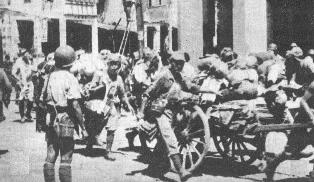

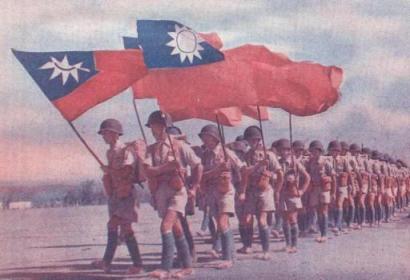

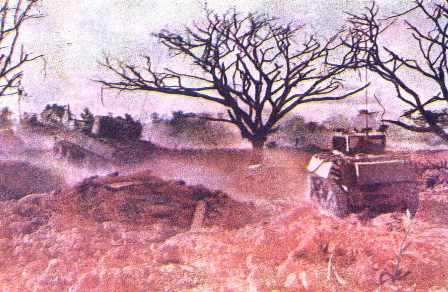
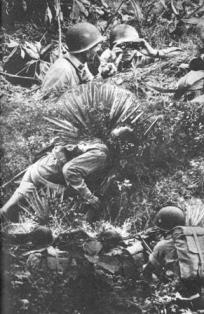
 GENERAL SUN CONFERRING WITH MAJ. GEN. LI HUNG ON THE TACTICS FOR THE ATTACK ON YUPONG GA
GENERAL SUN CONFERRING WITH MAJ. GEN. LI HUNG ON THE TACTICS FOR THE ATTACK ON YUPONG GA
 TOP: CASUALTIES LEFT BY THE FLEEING ENEMY.
MIDDLE: EVACUATED POSITION DESTROYED BY SEVERE BOMBARDMENT.
BOTTOM: DUMMIES USED BY THE ENEMY AS SHOCK ABSORBERS.
TOP: CASUALTIES LEFT BY THE FLEEING ENEMY.
MIDDLE: EVACUATED POSITION DESTROYED BY SEVERE BOMBARDMENT.
BOTTOM: DUMMIES USED BY THE ENEMY AS SHOCK ABSORBERS.
